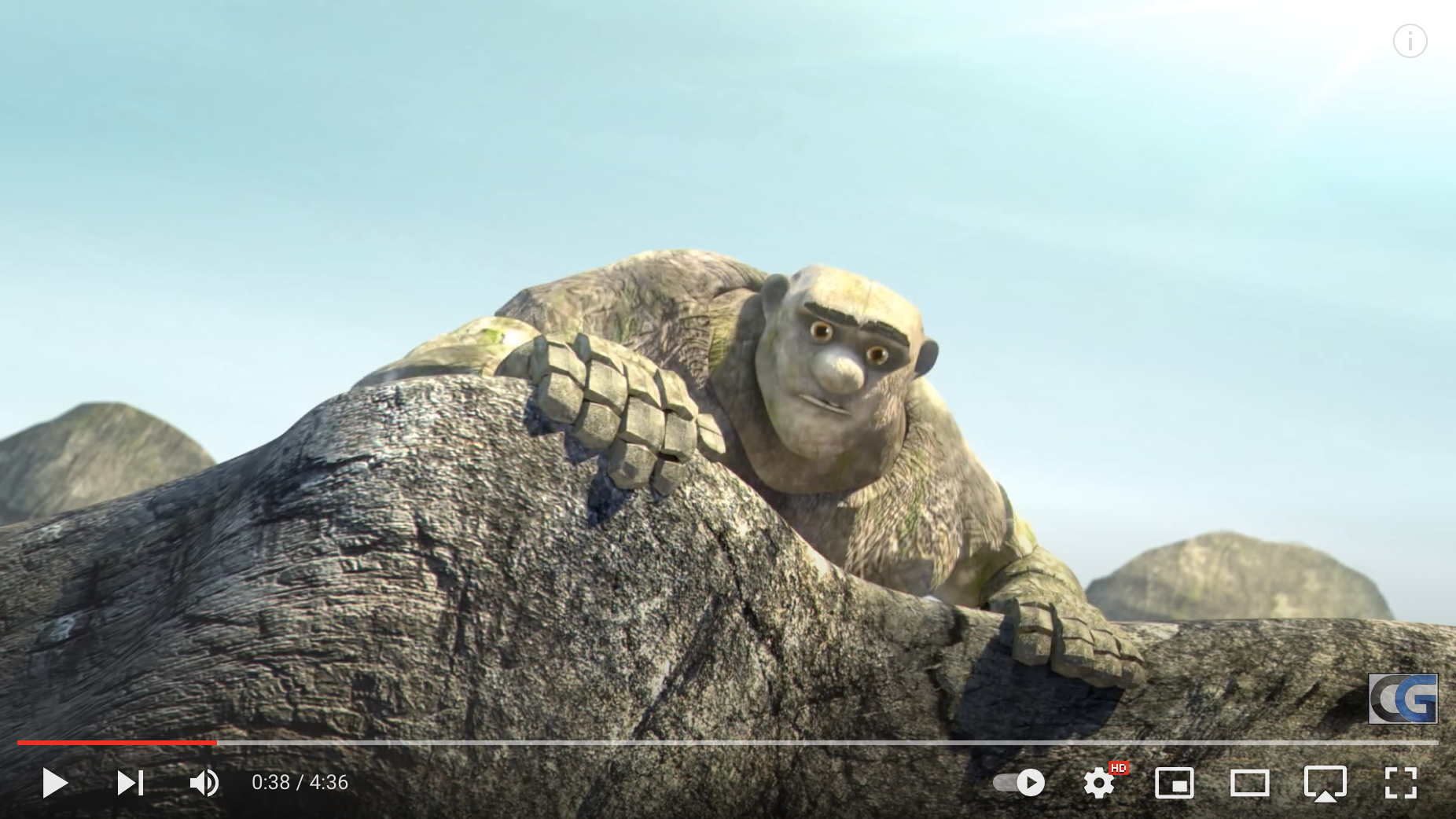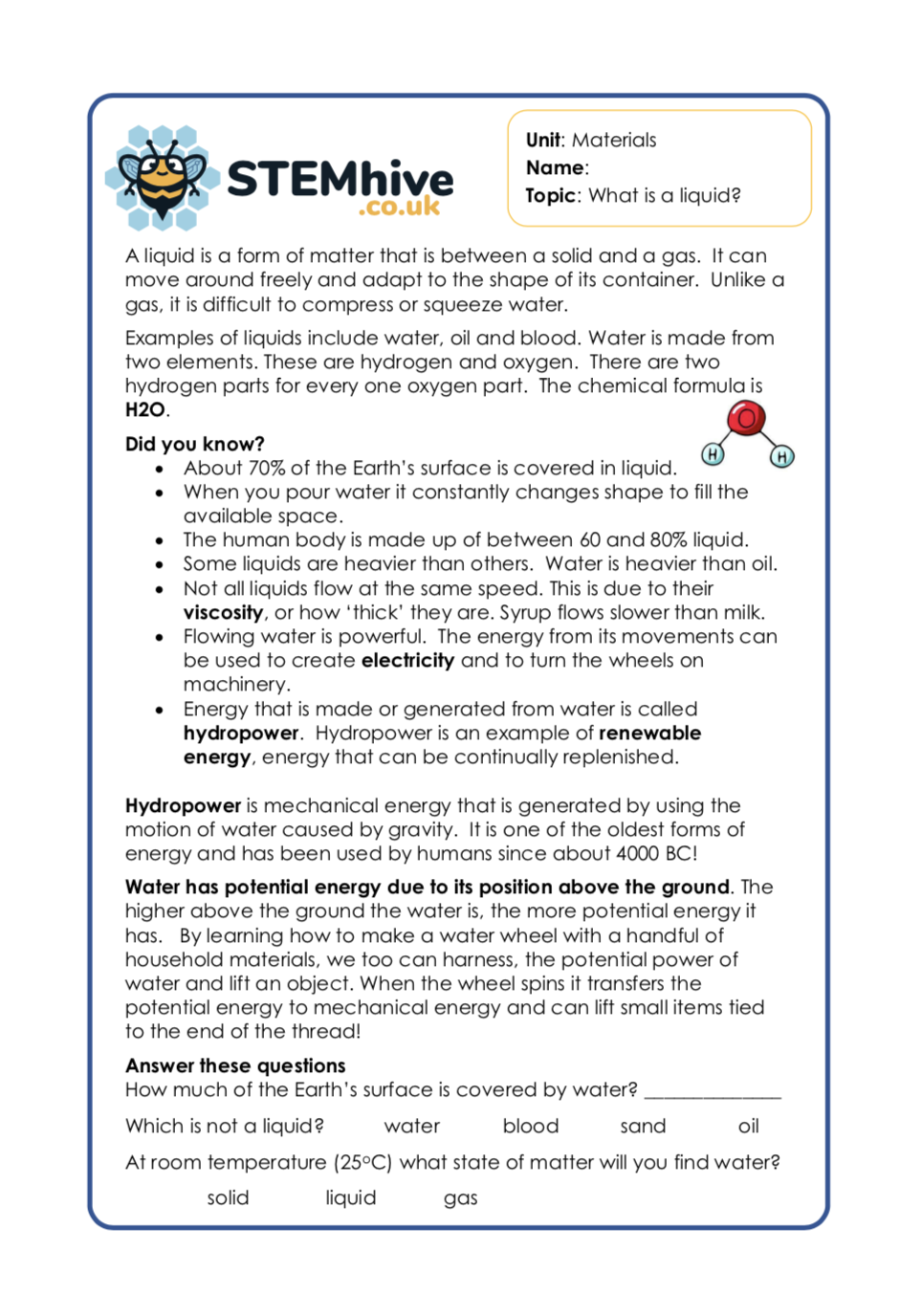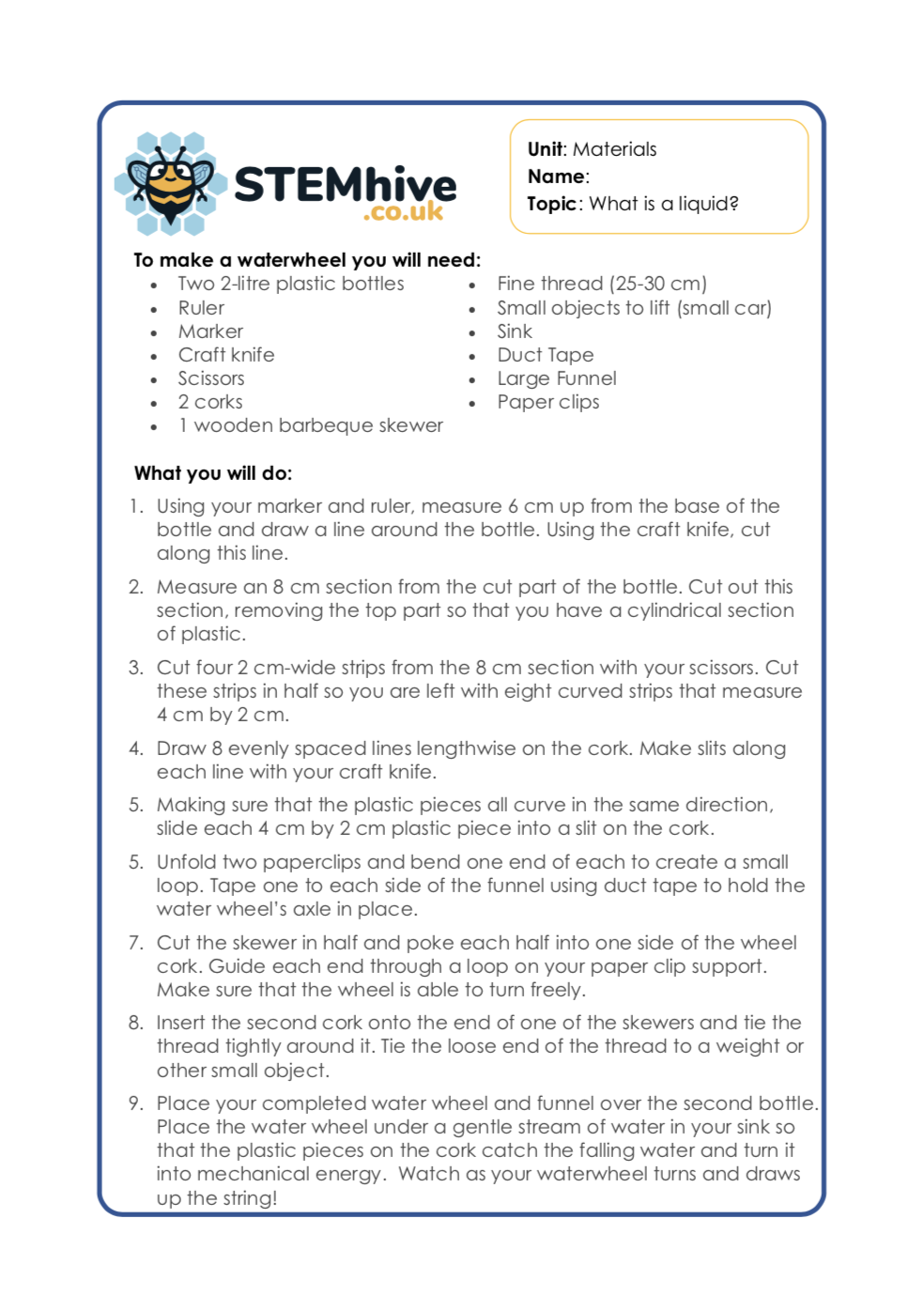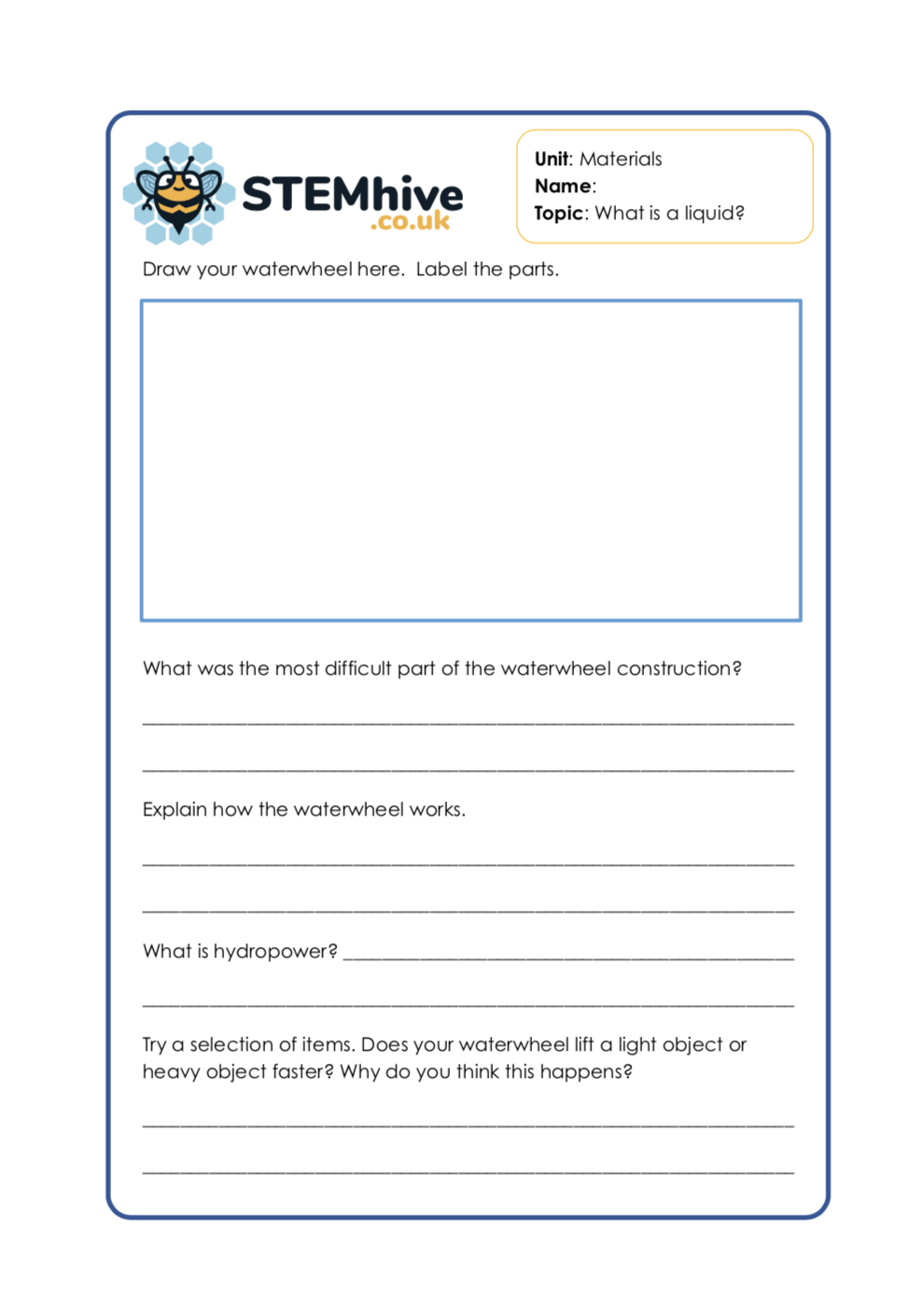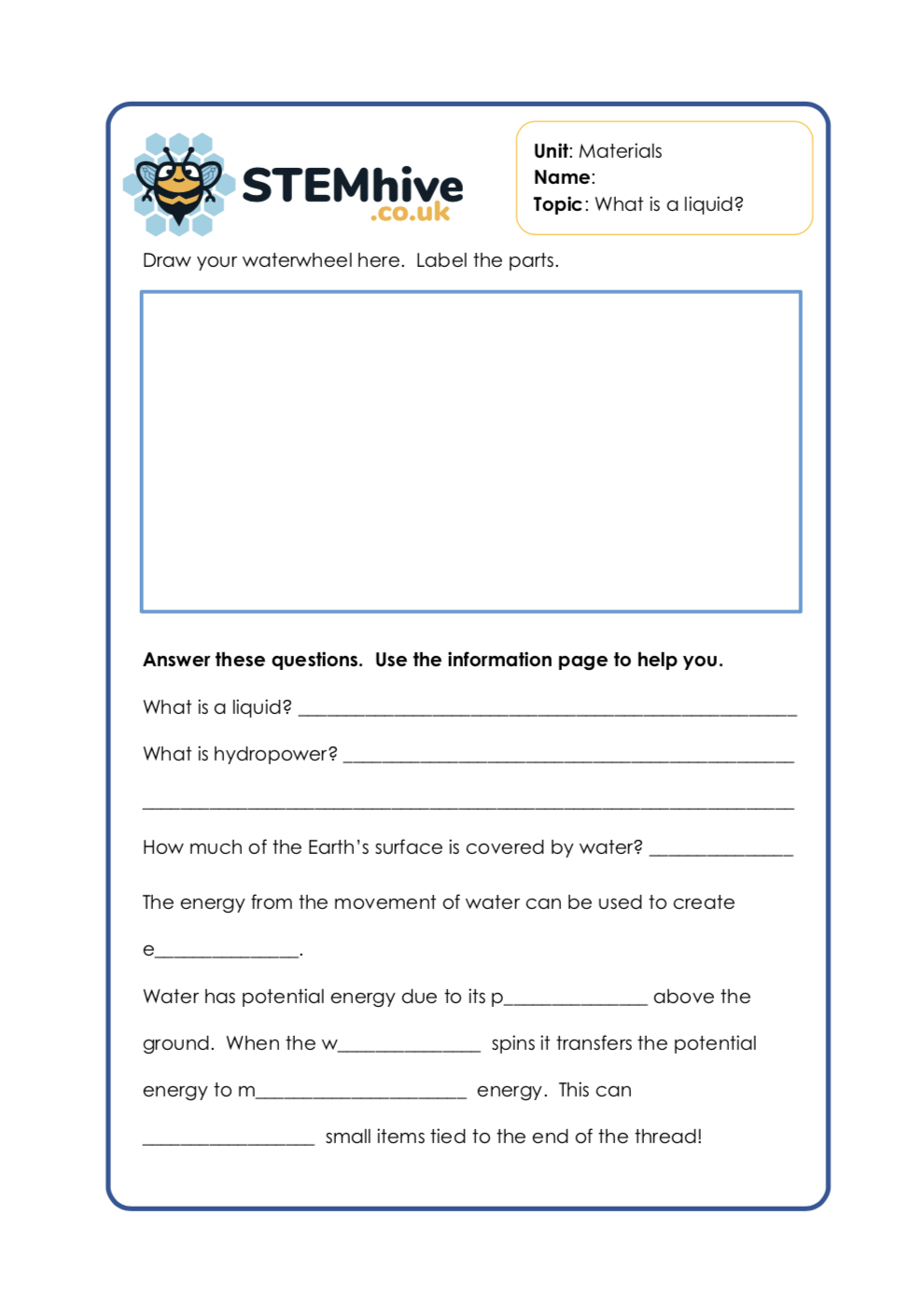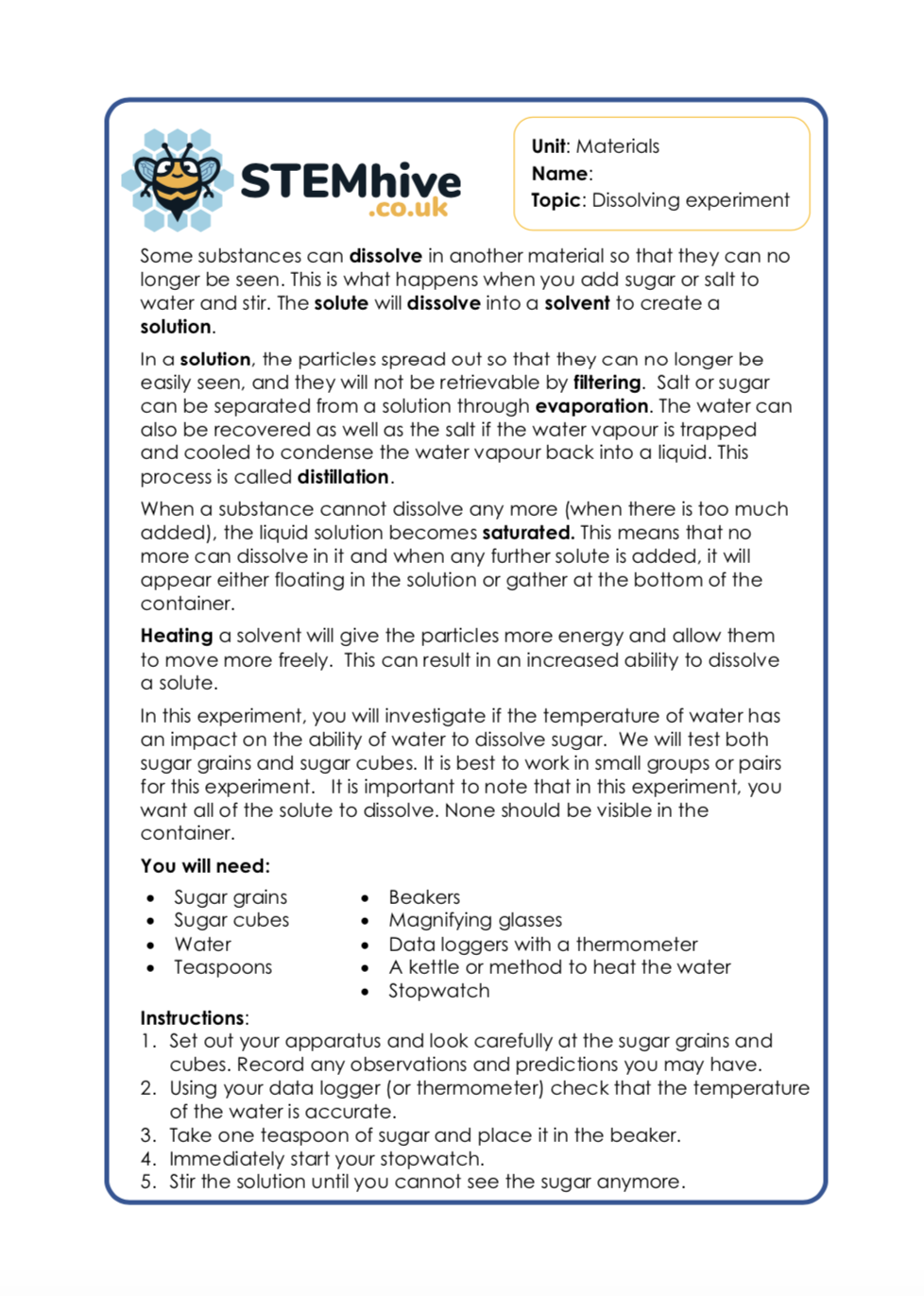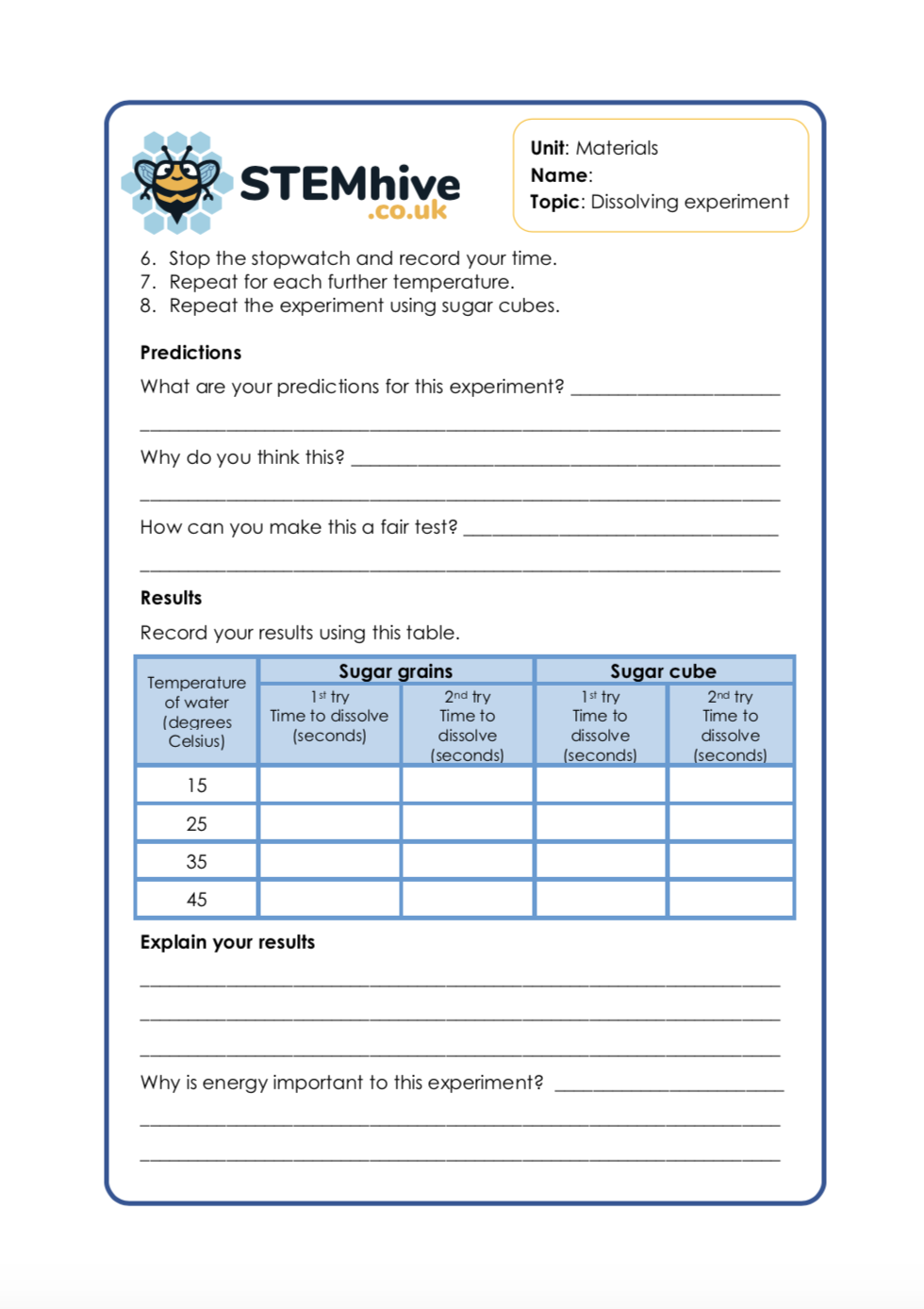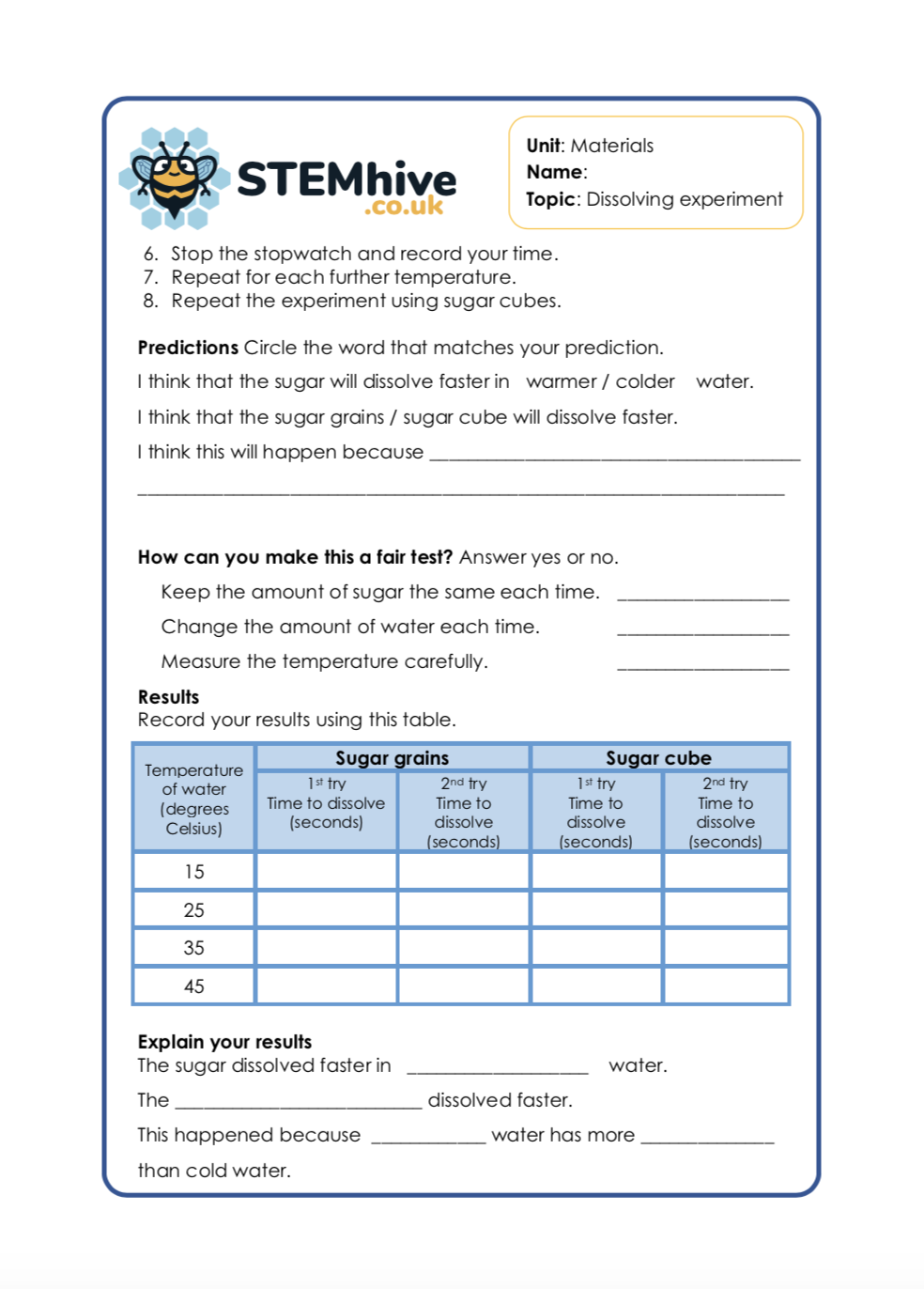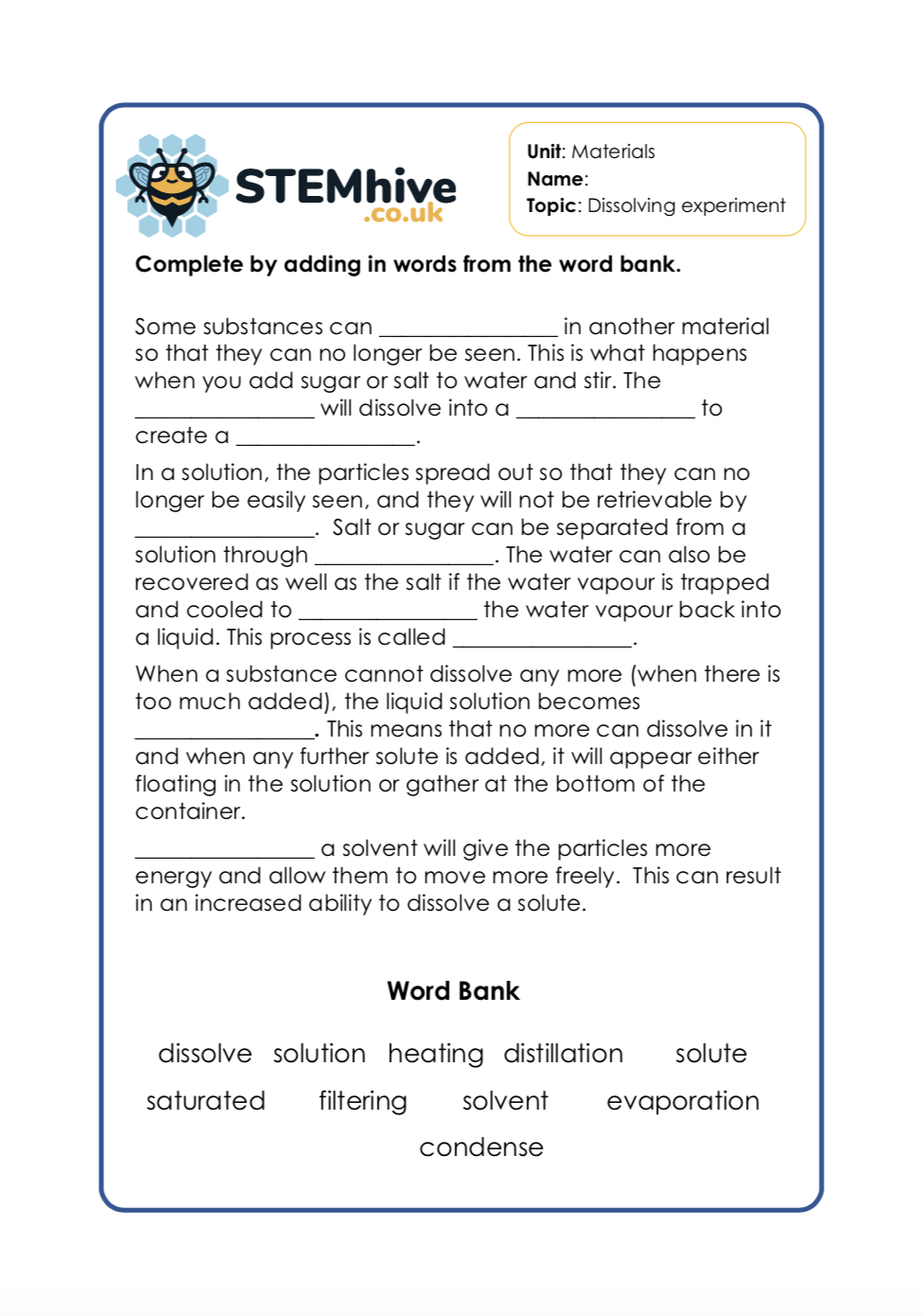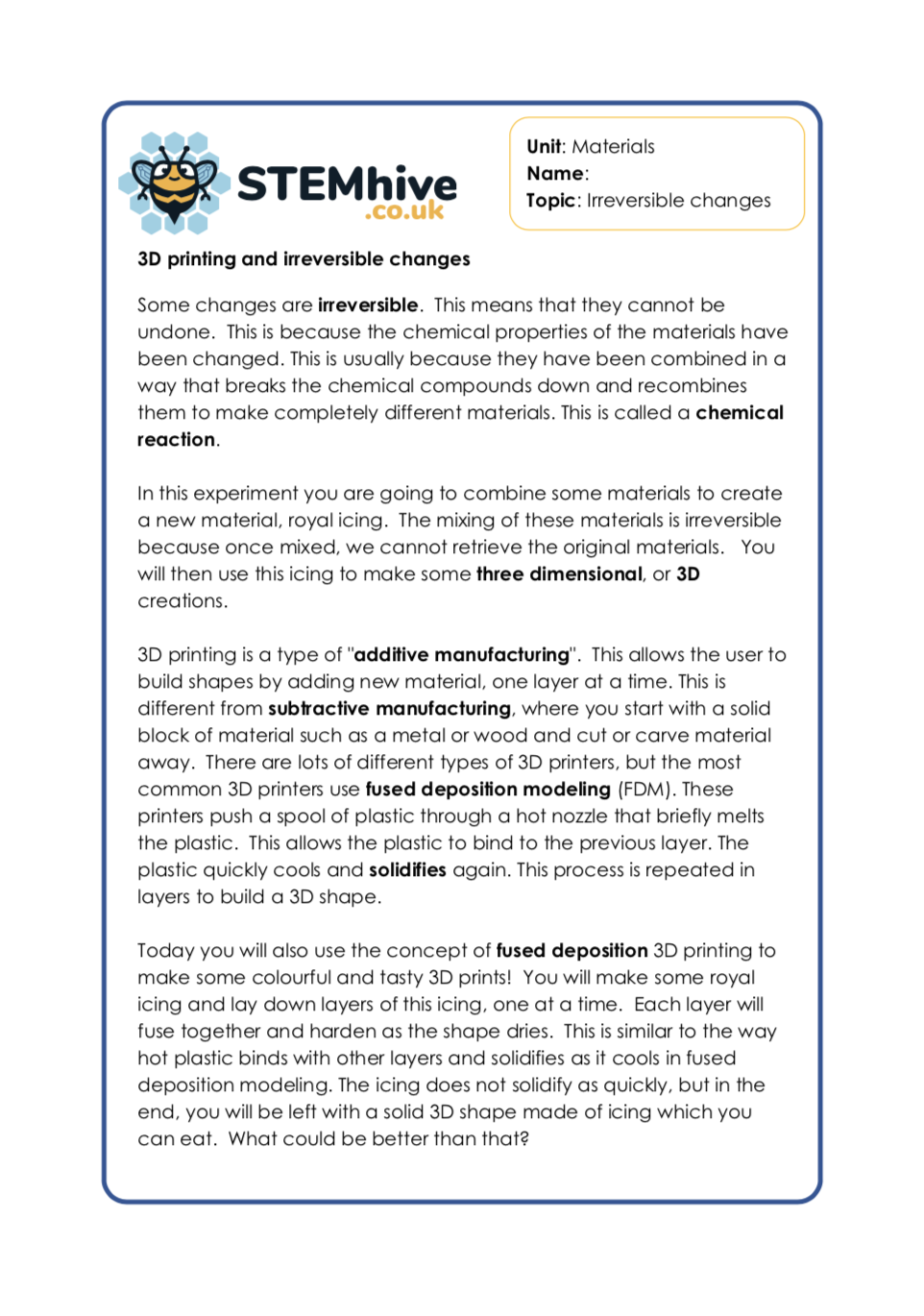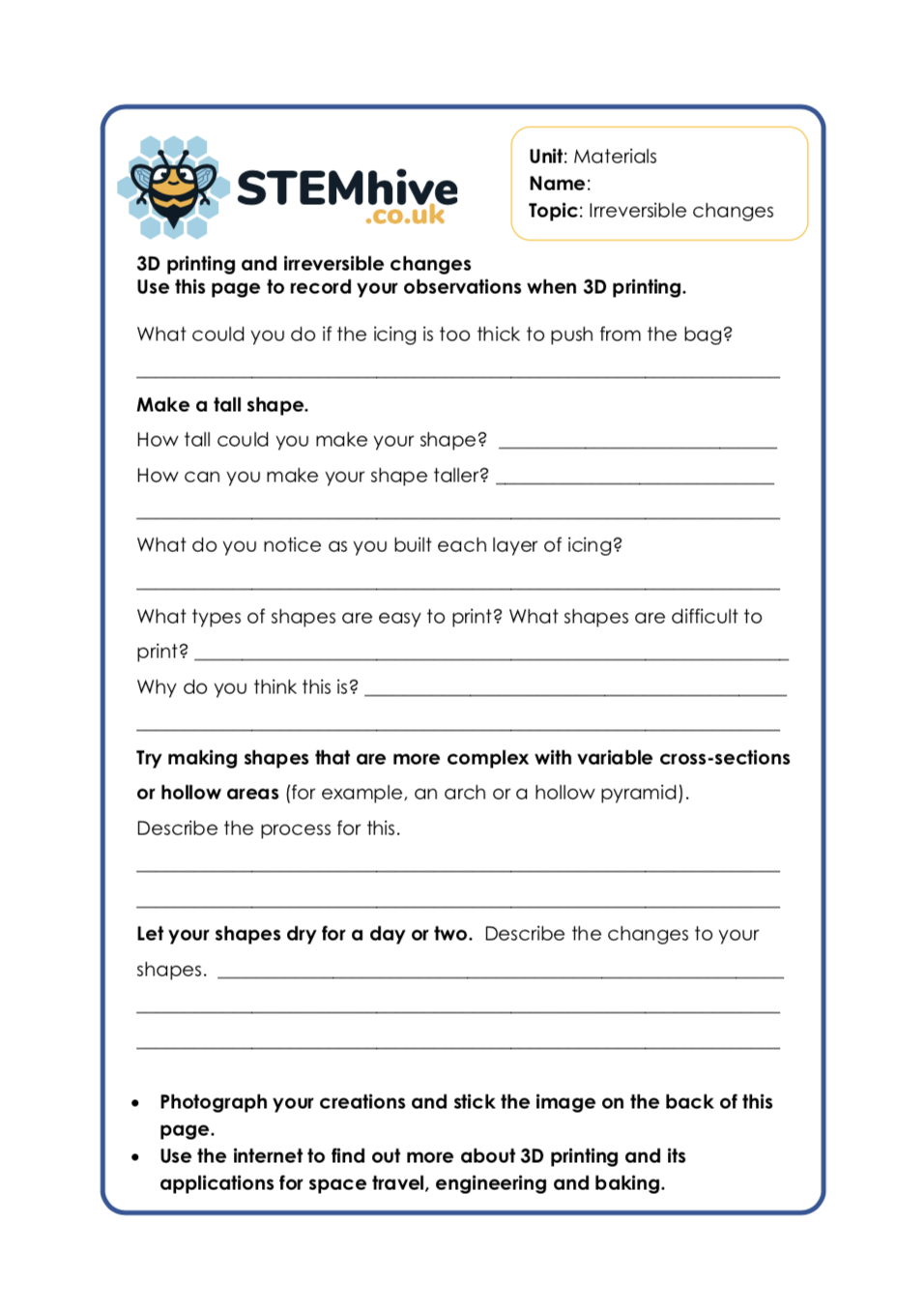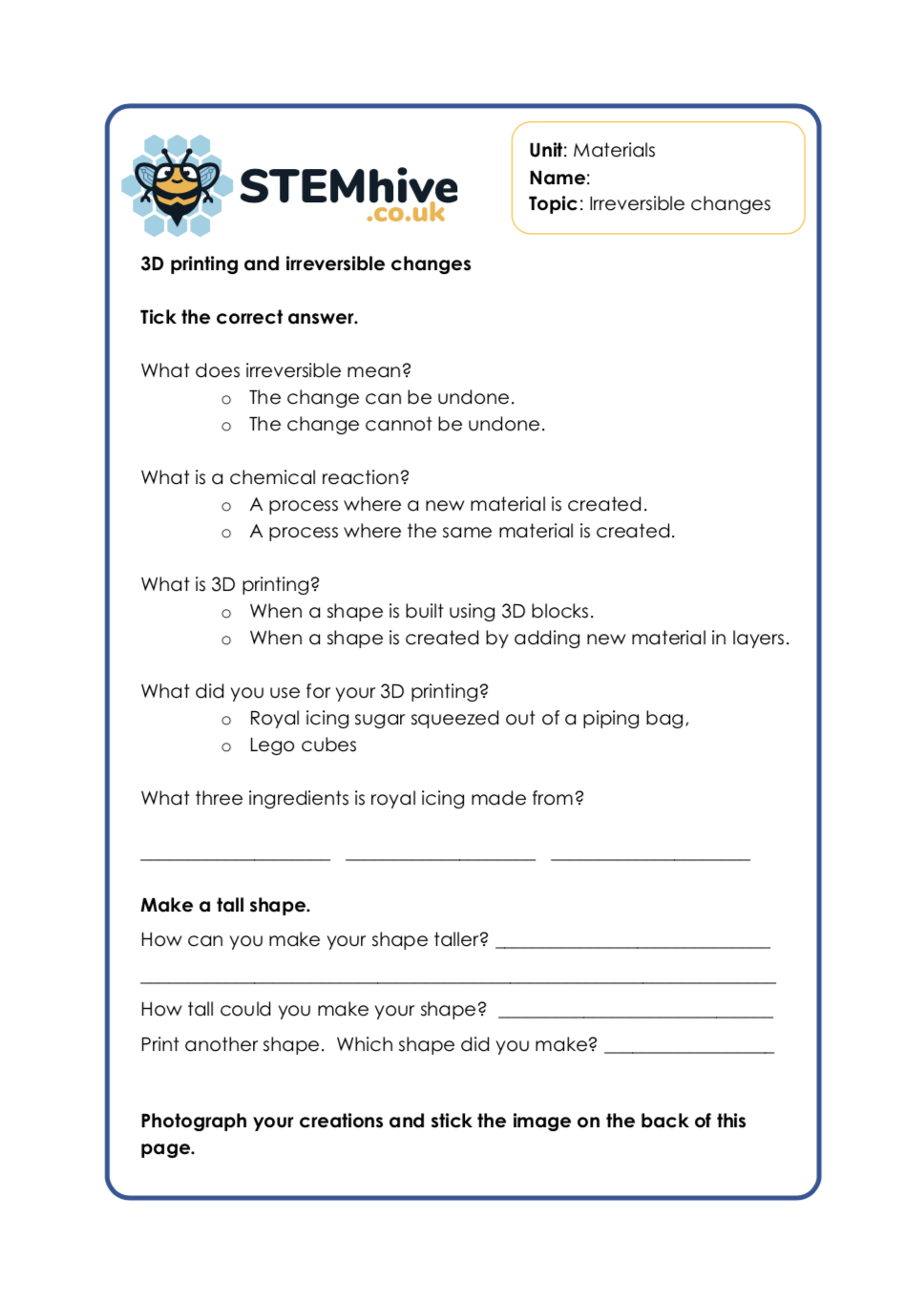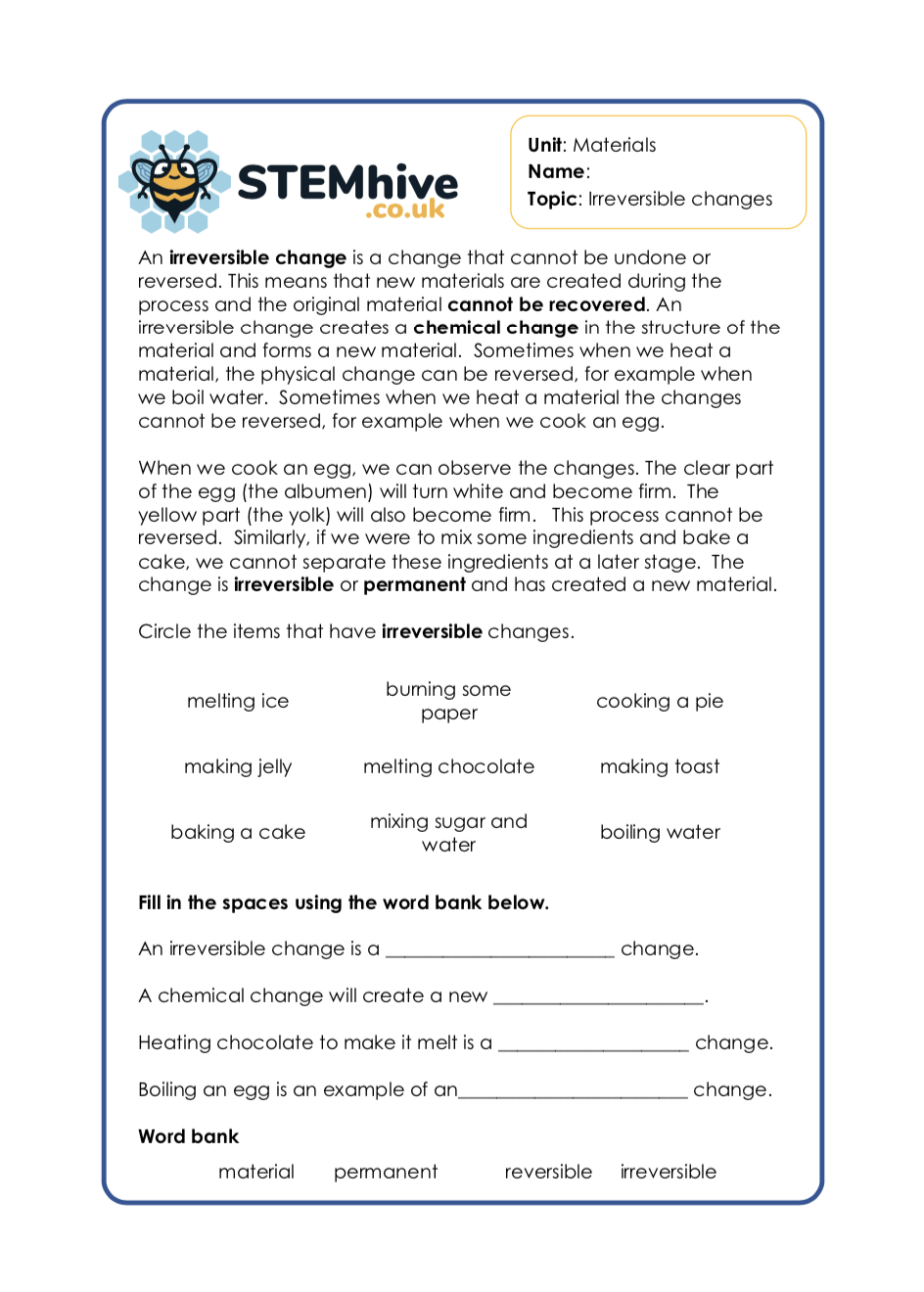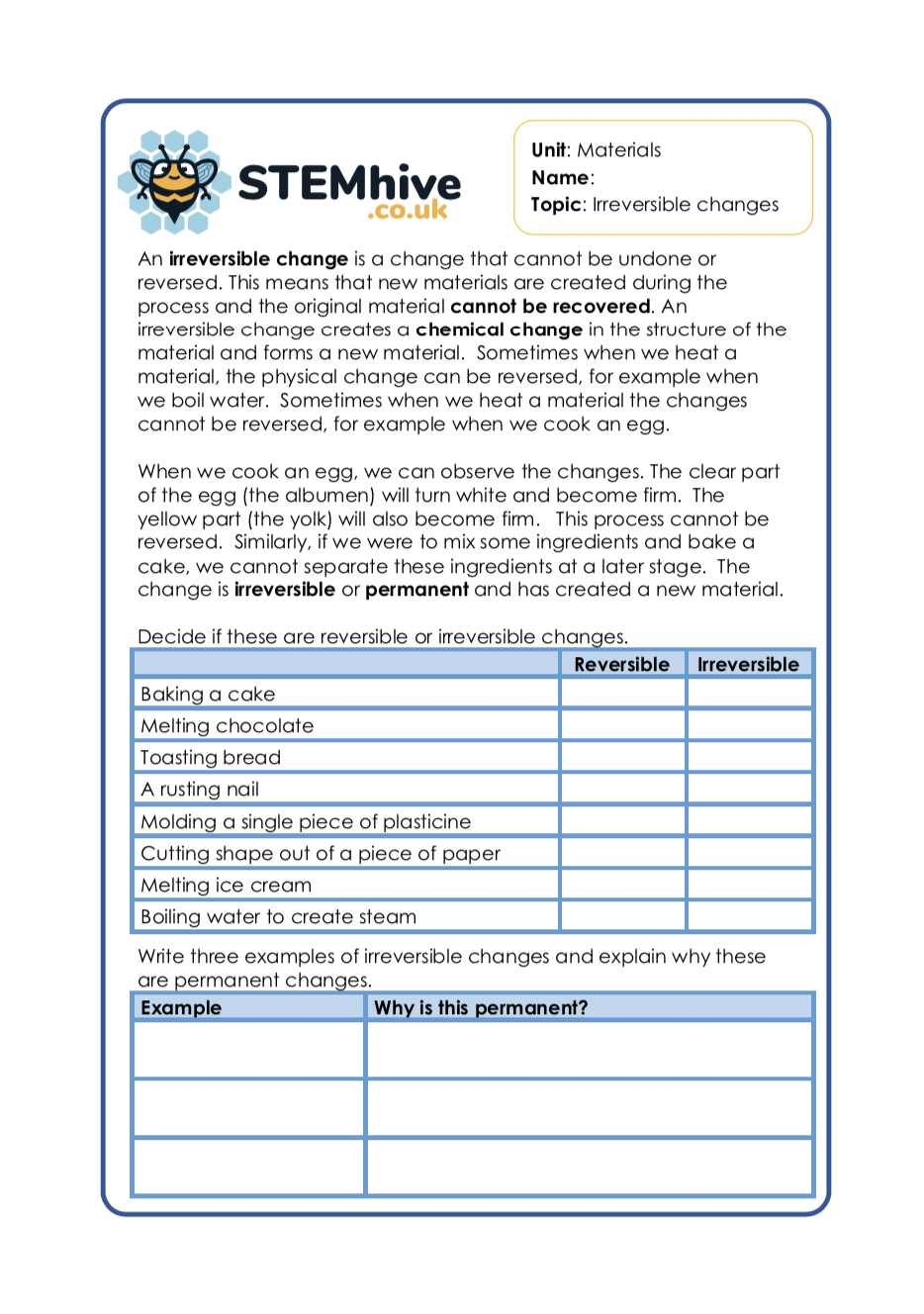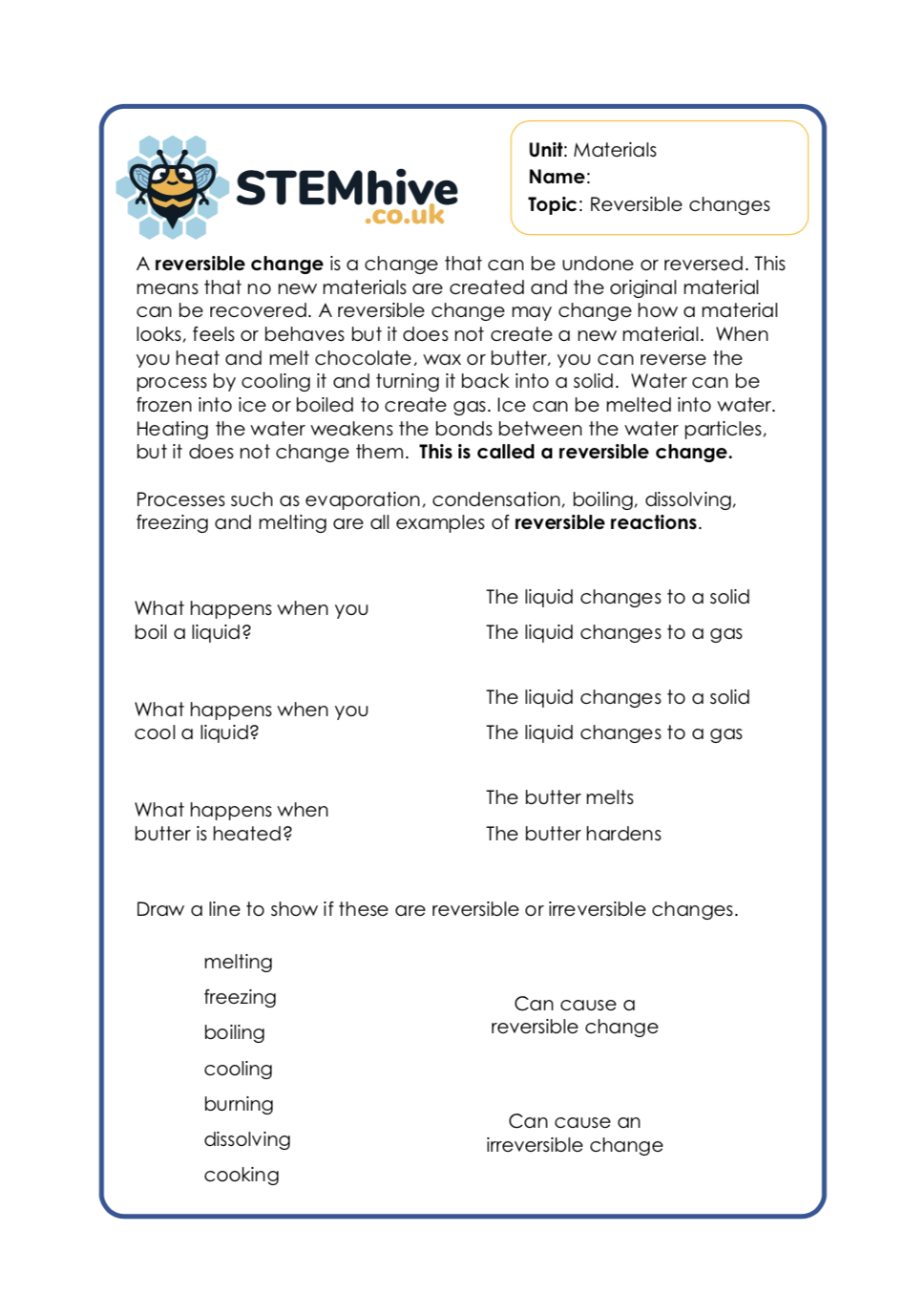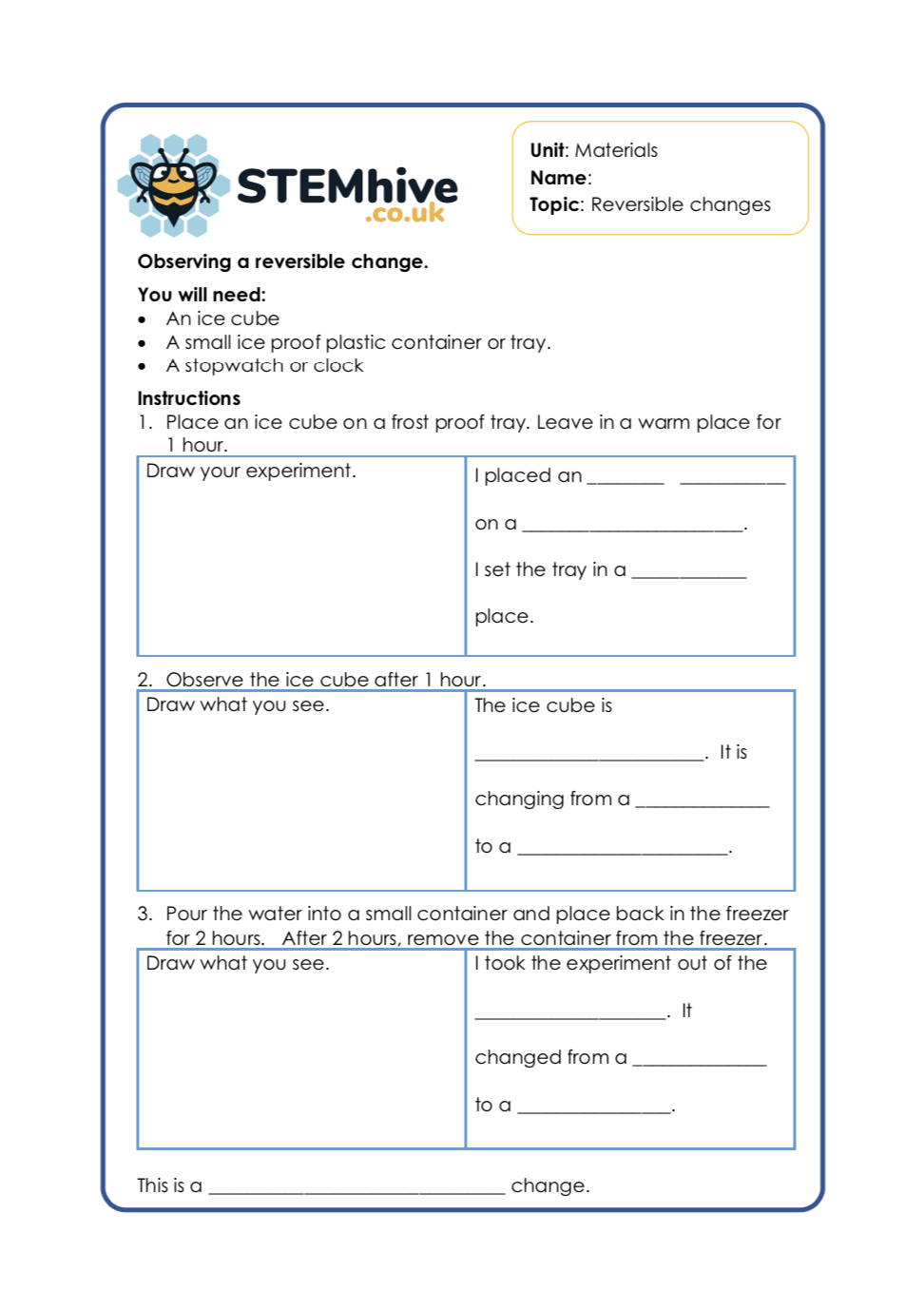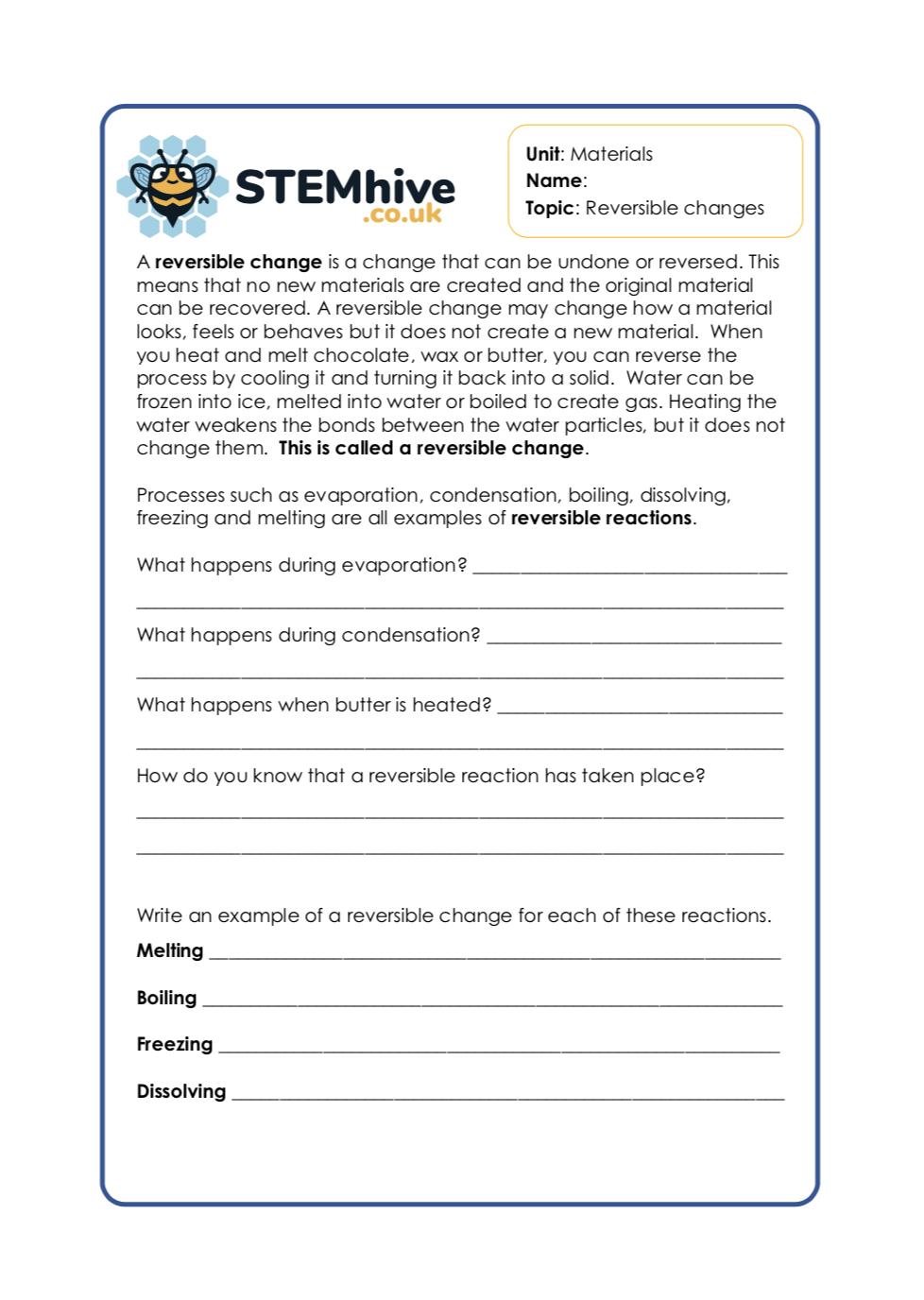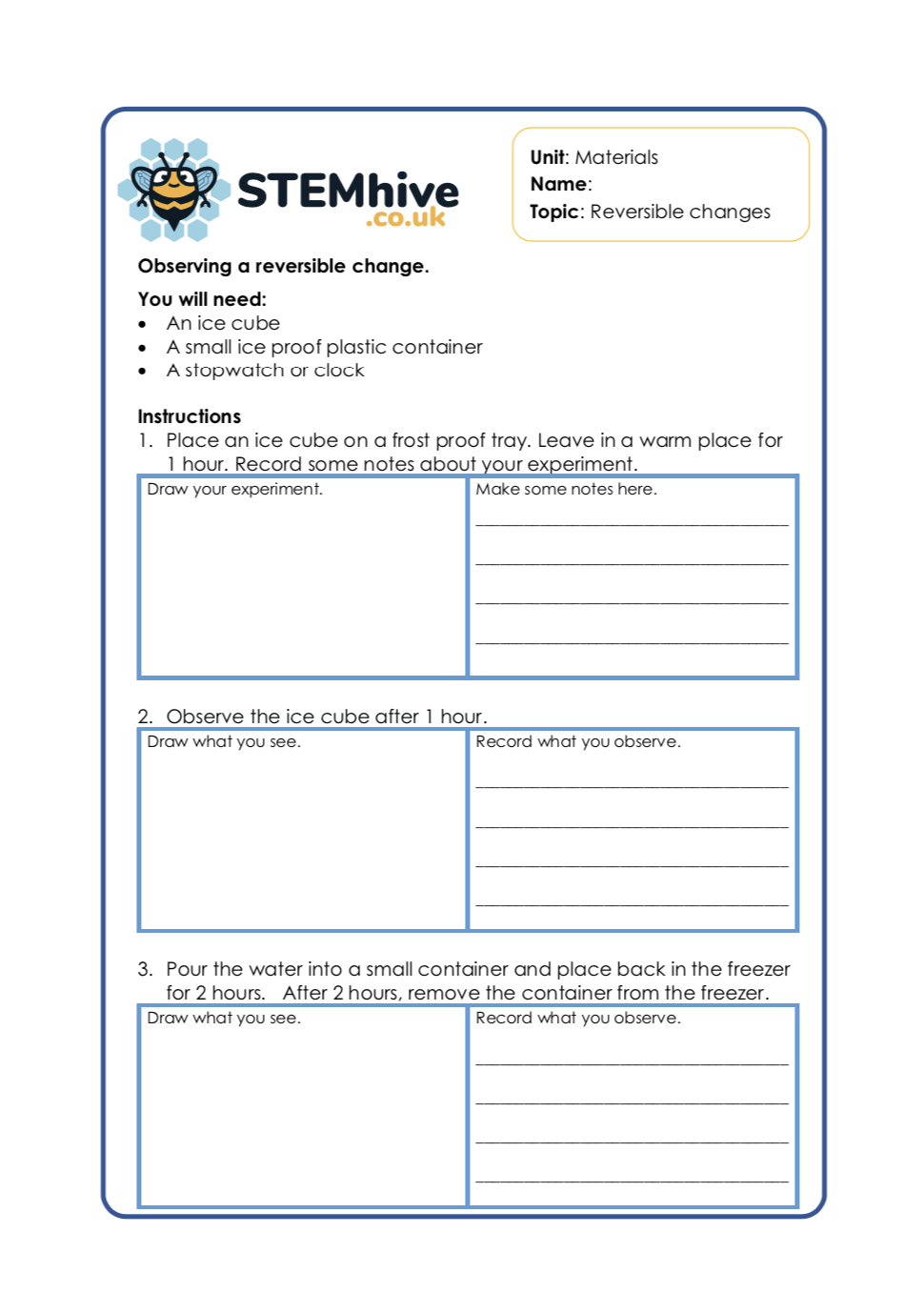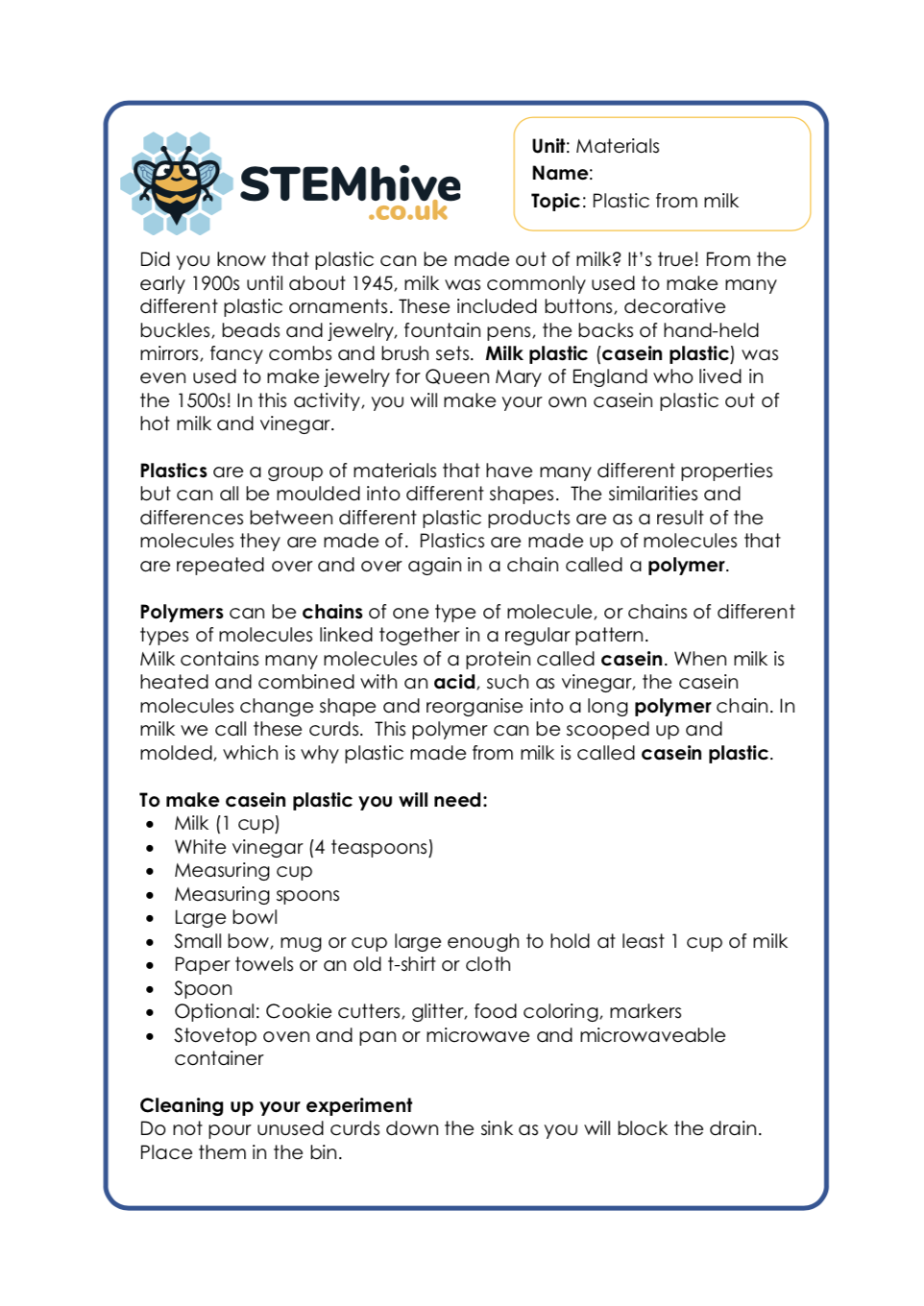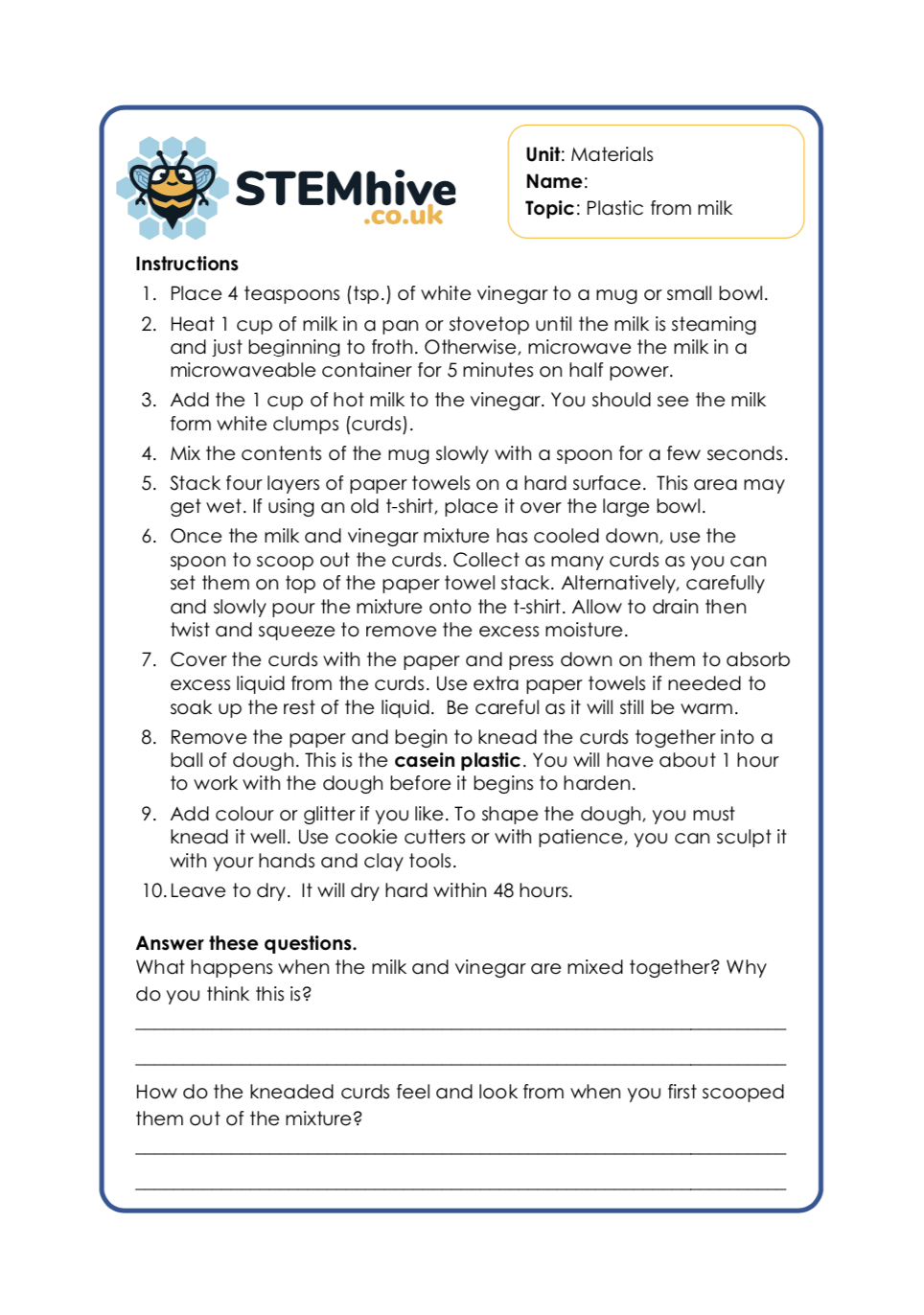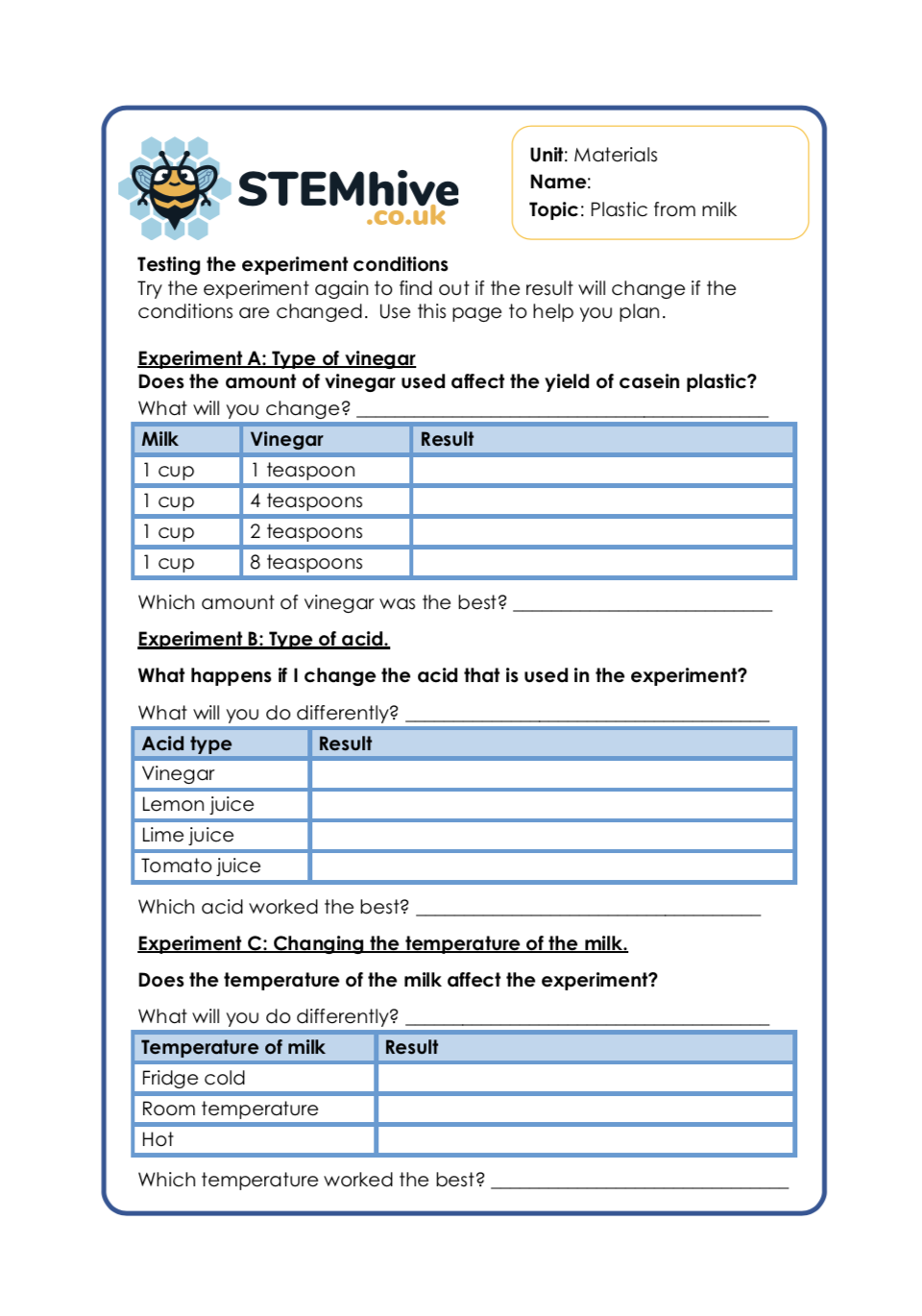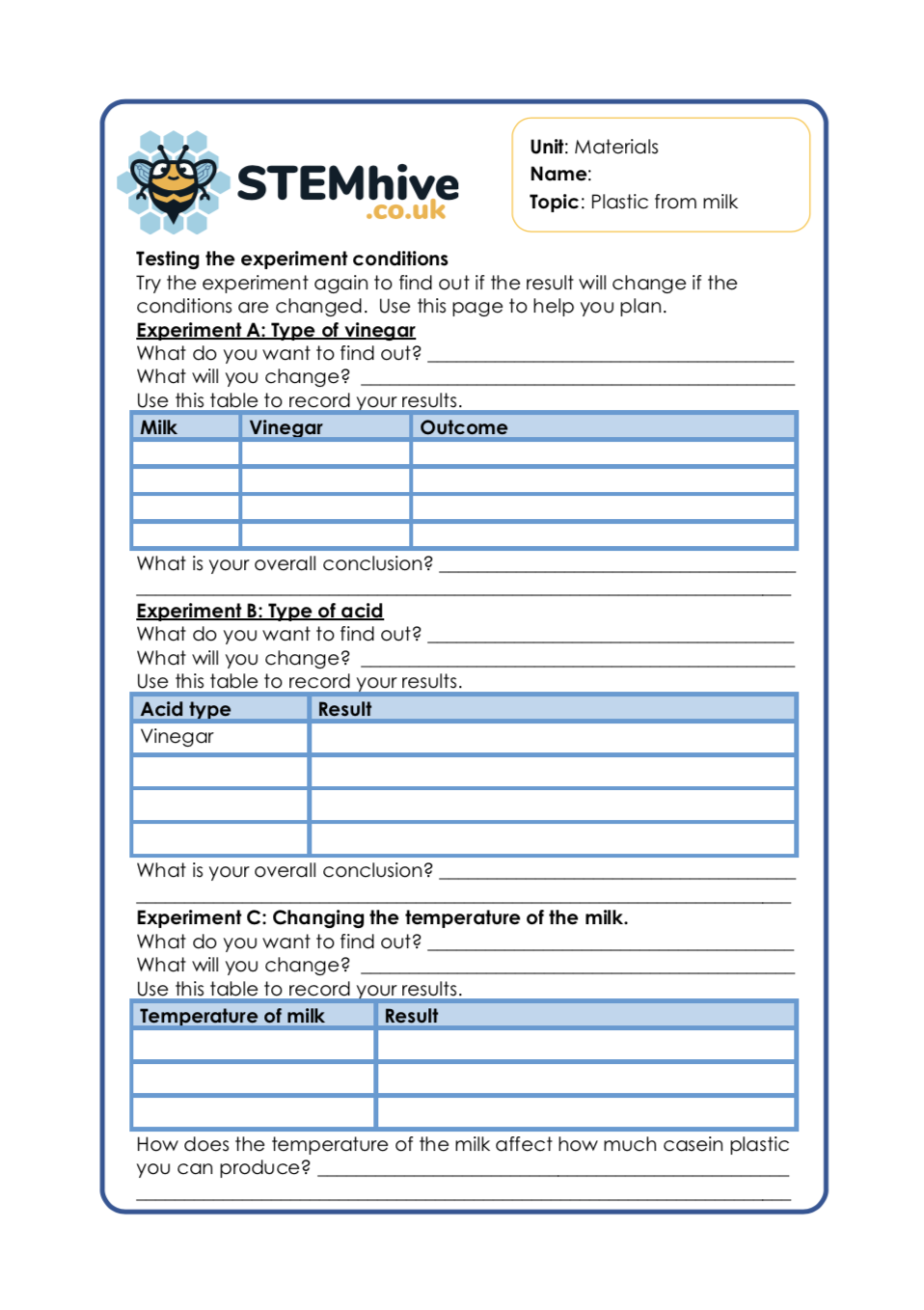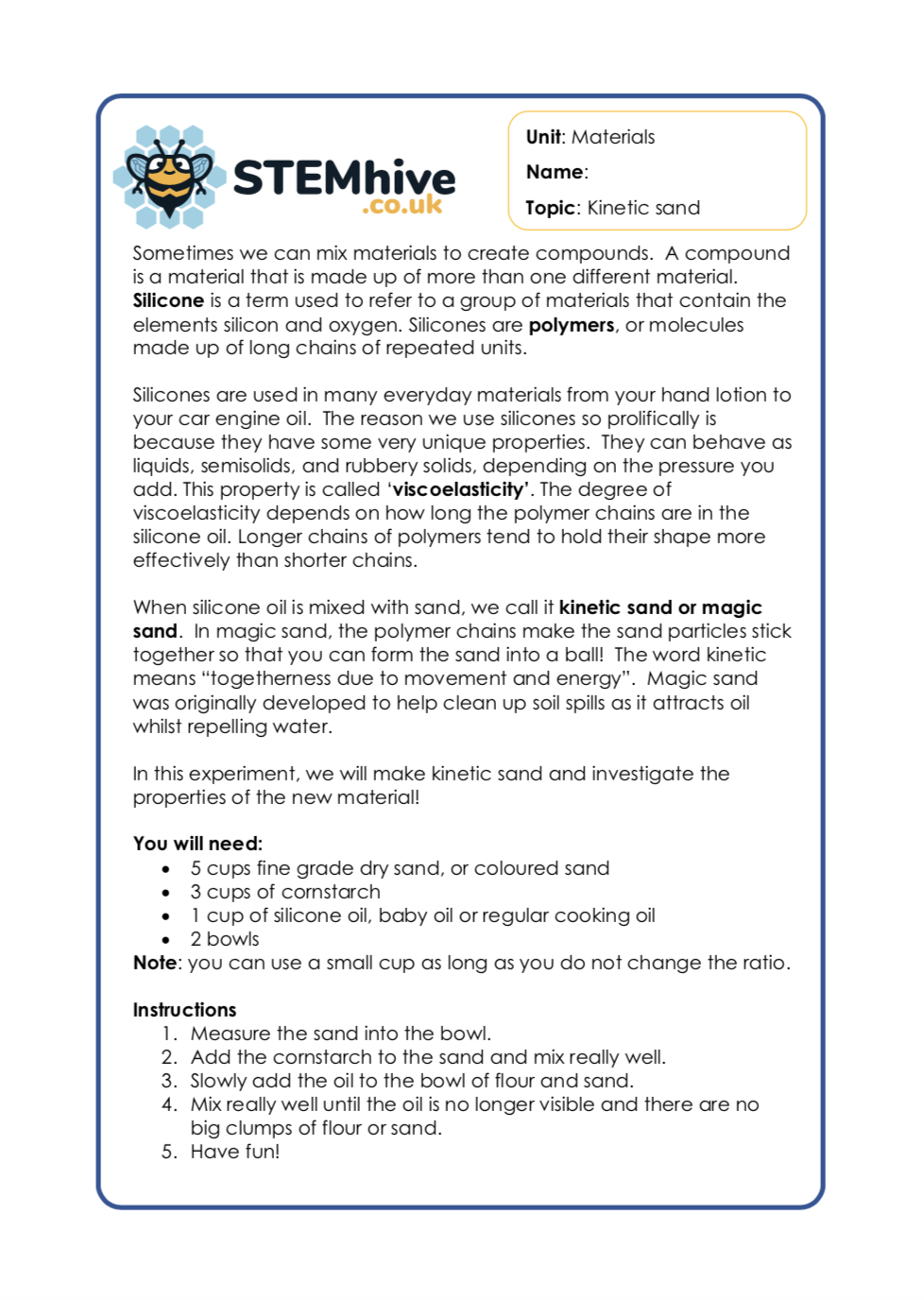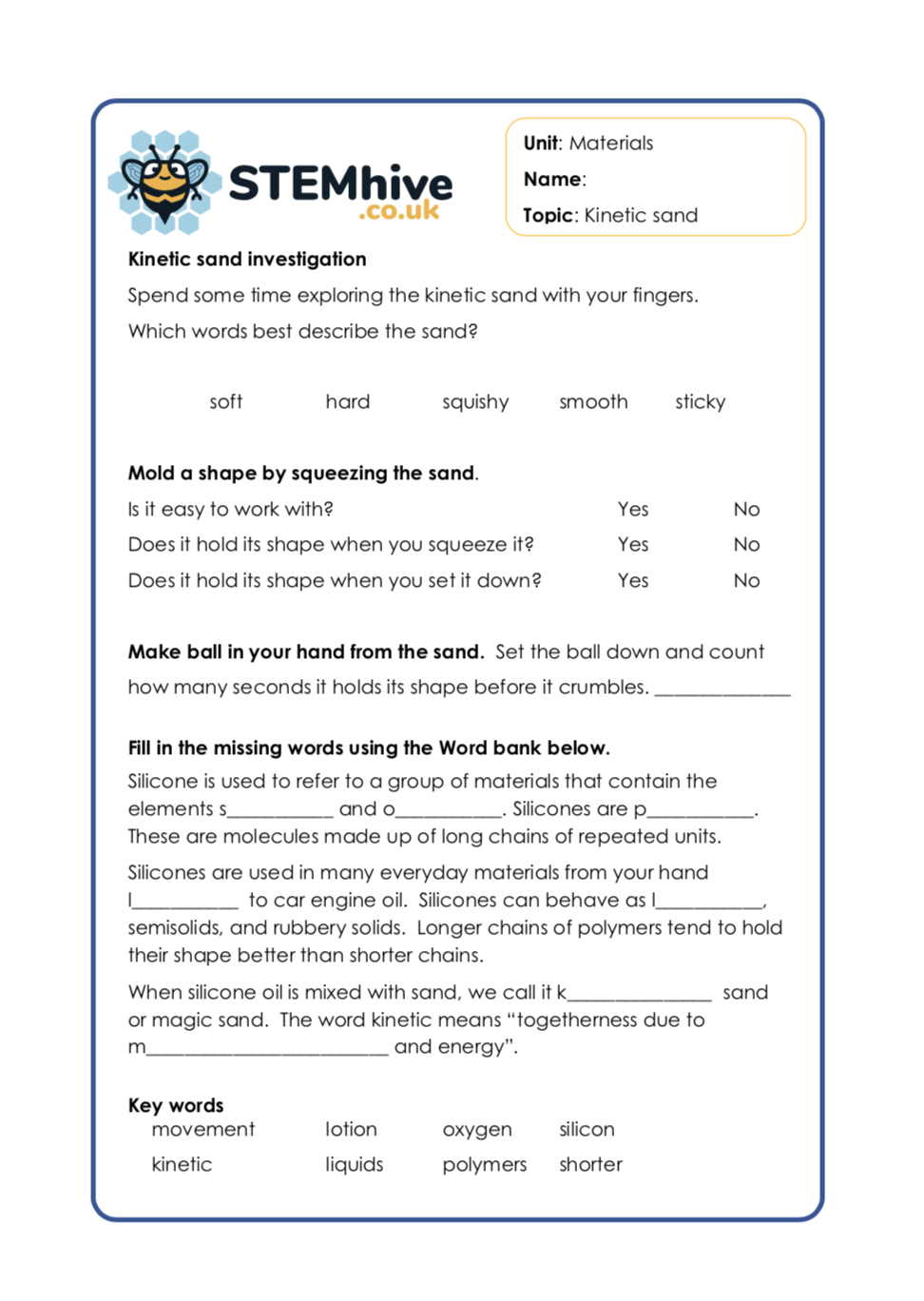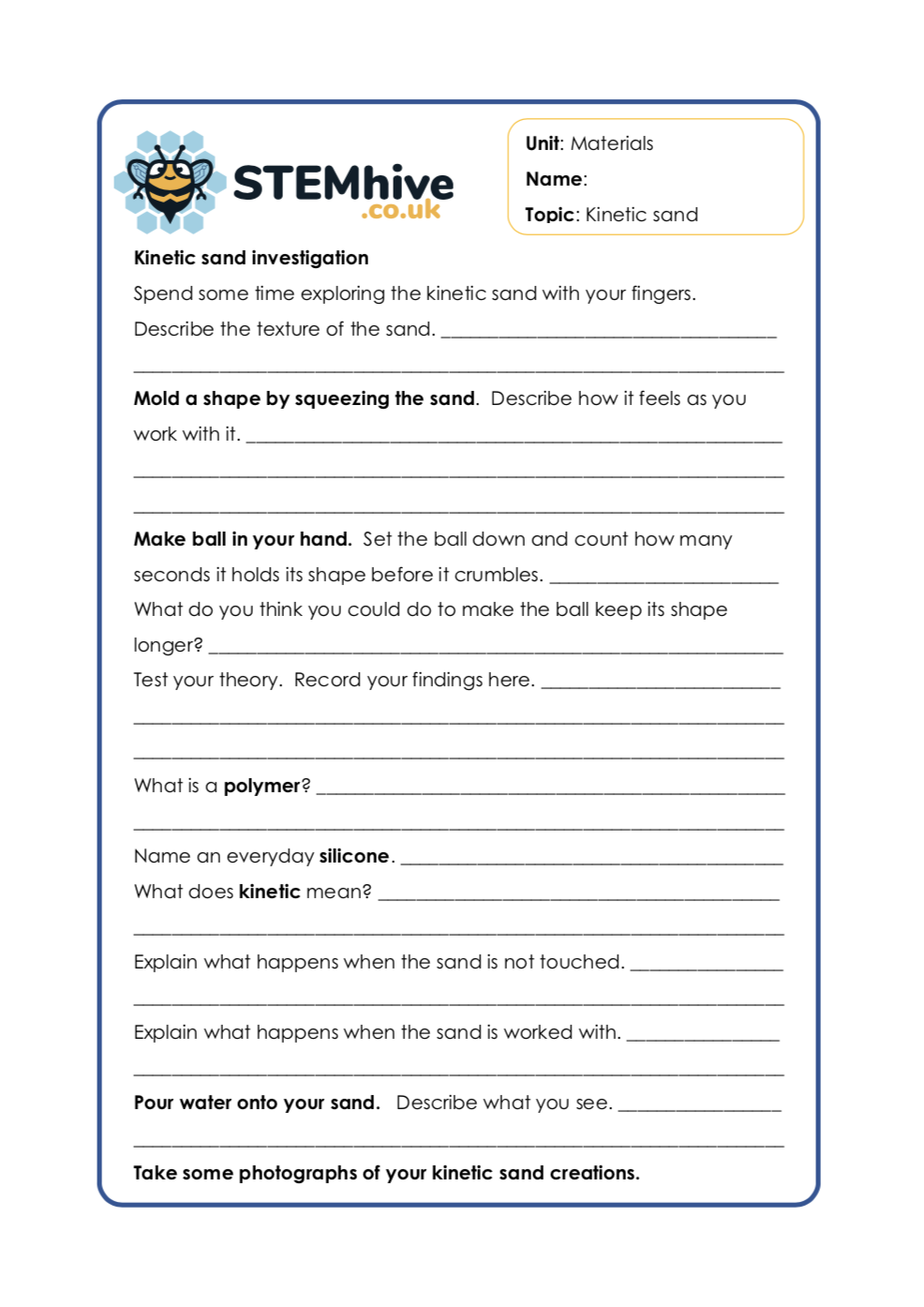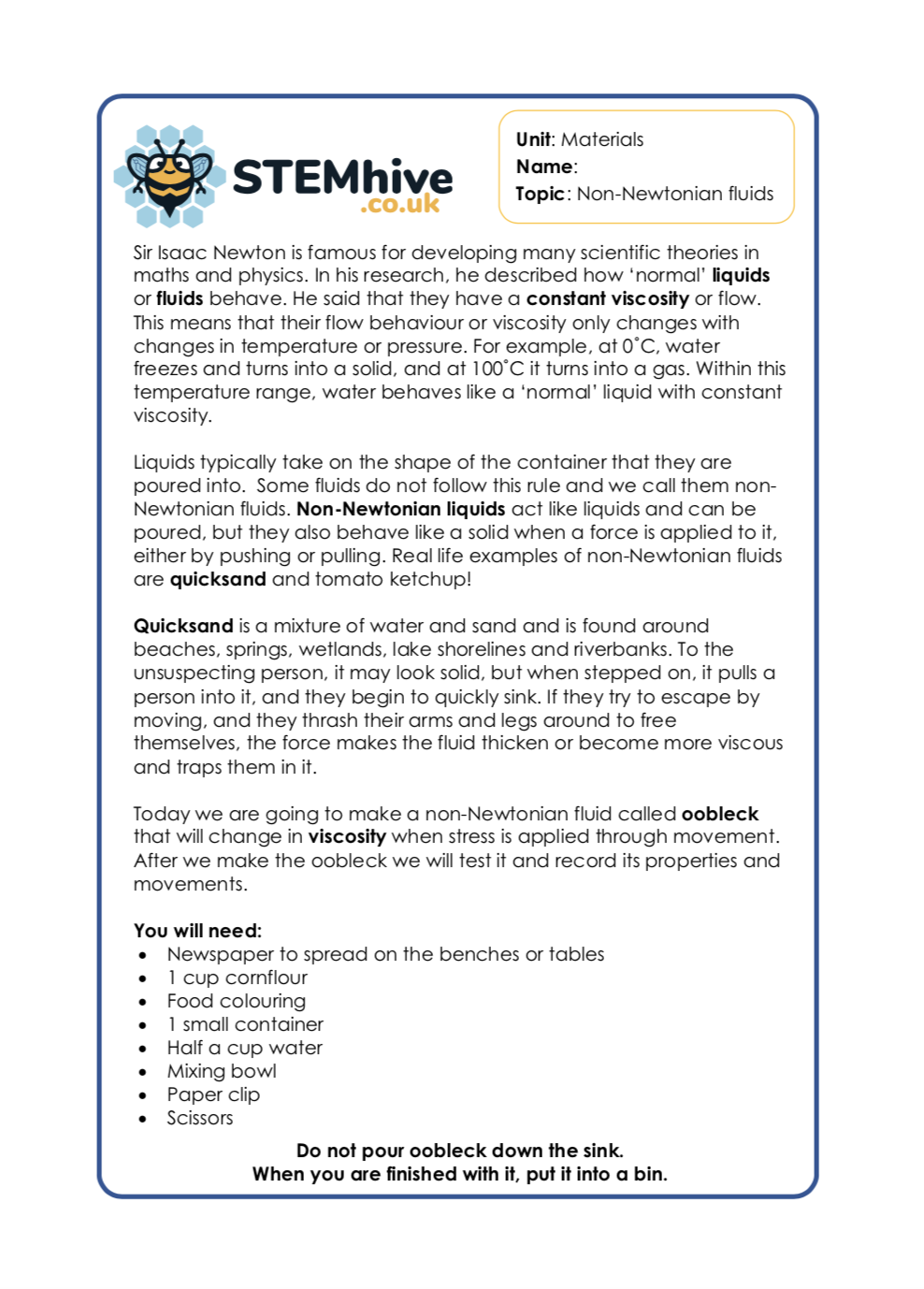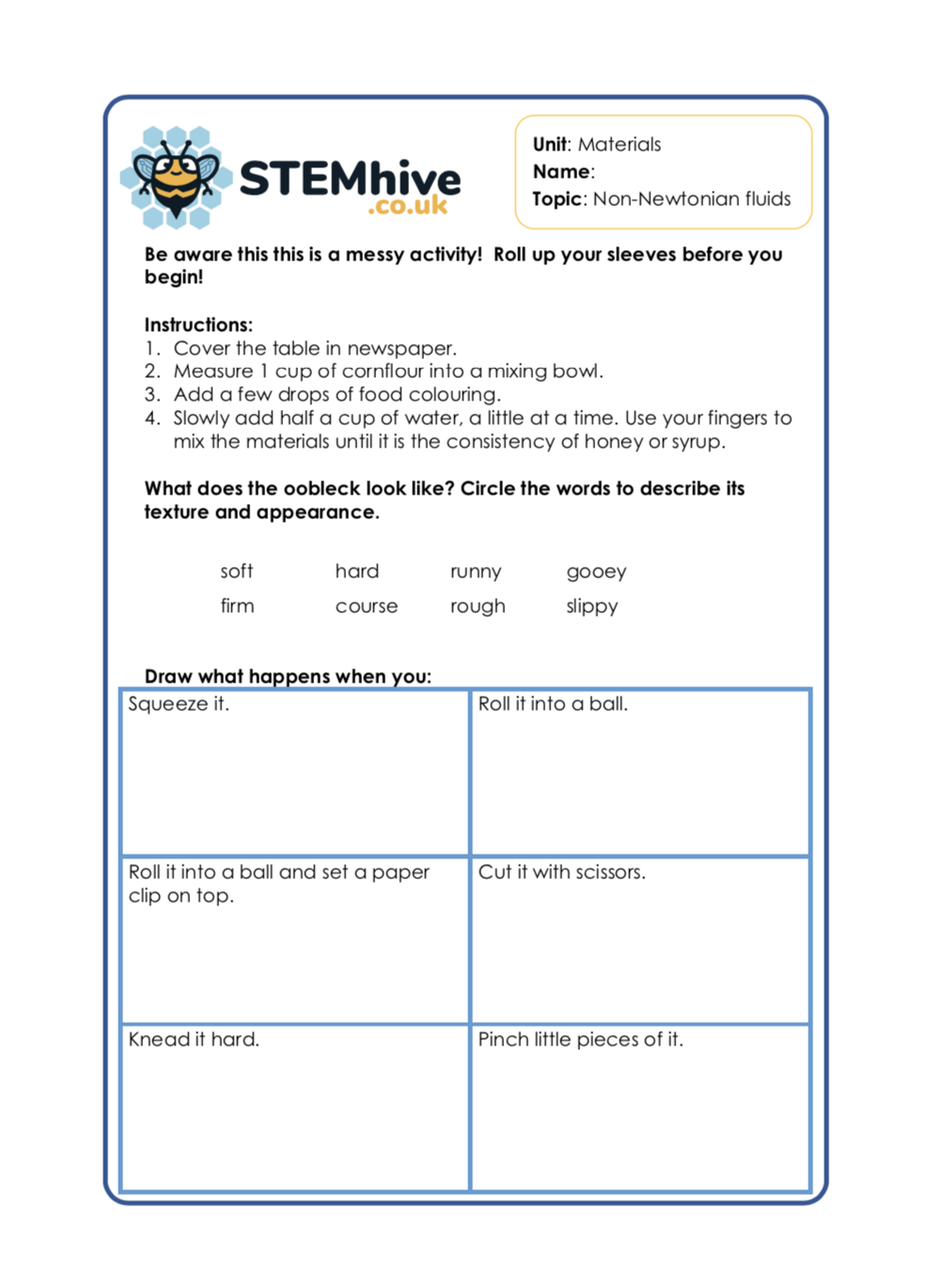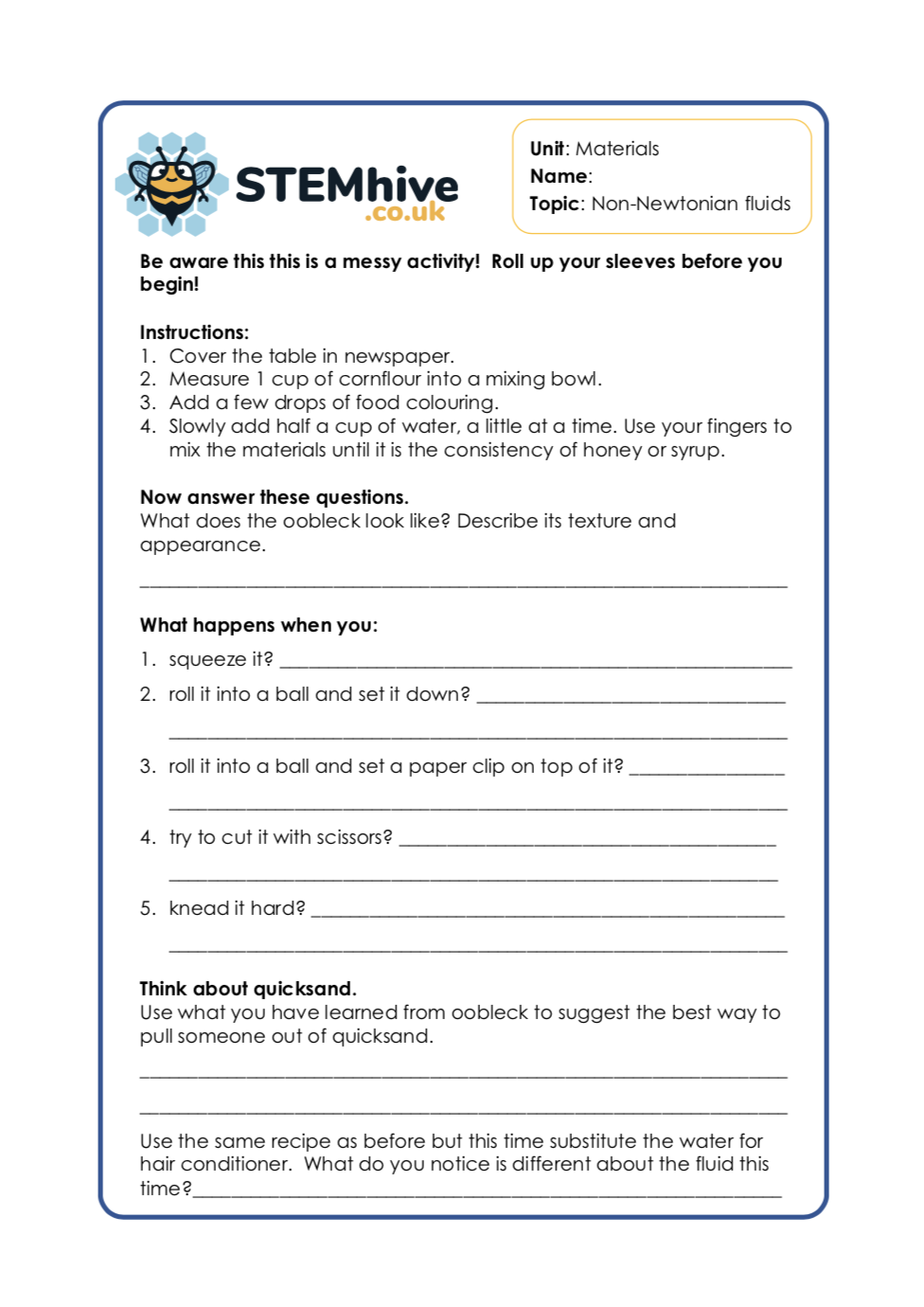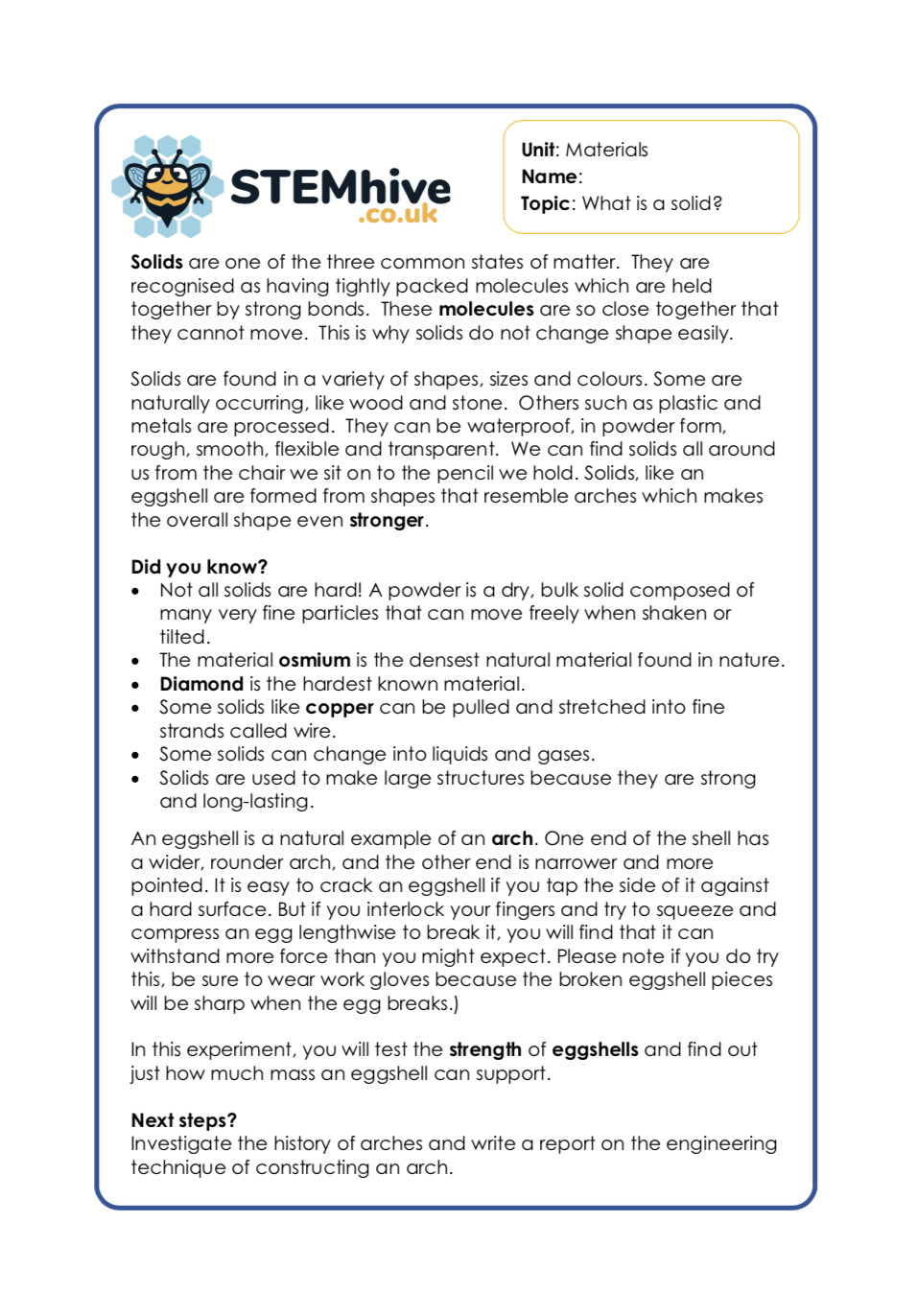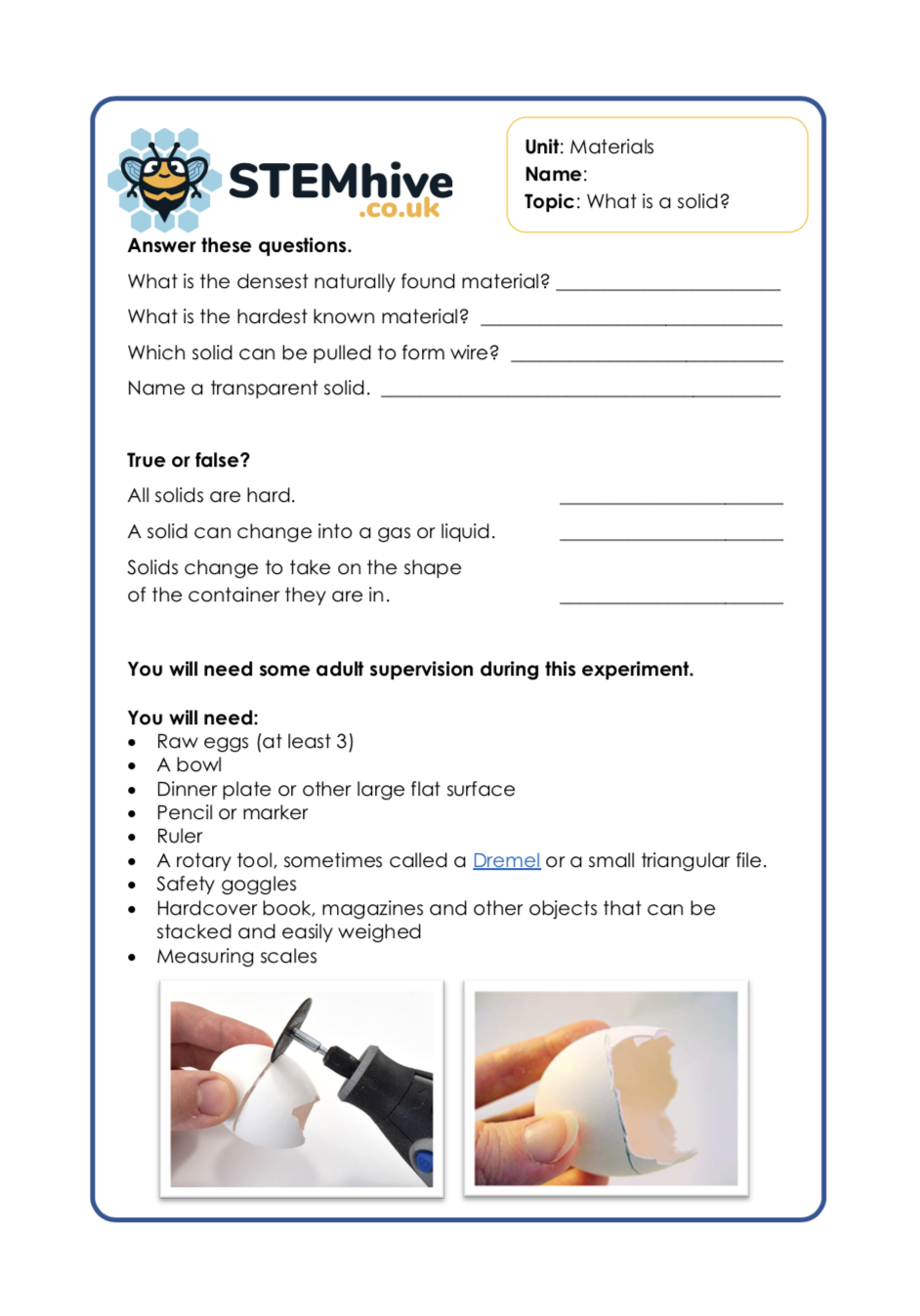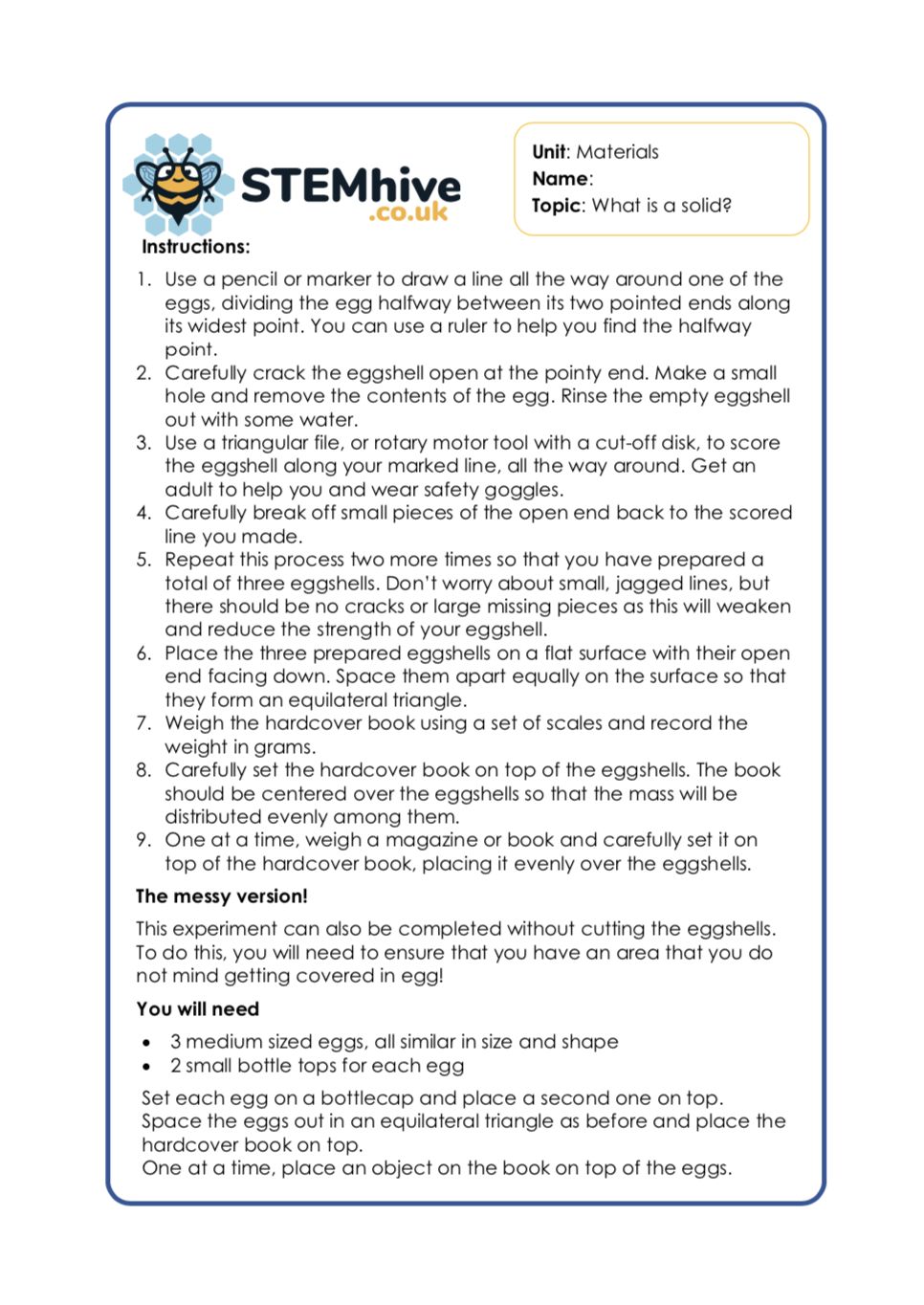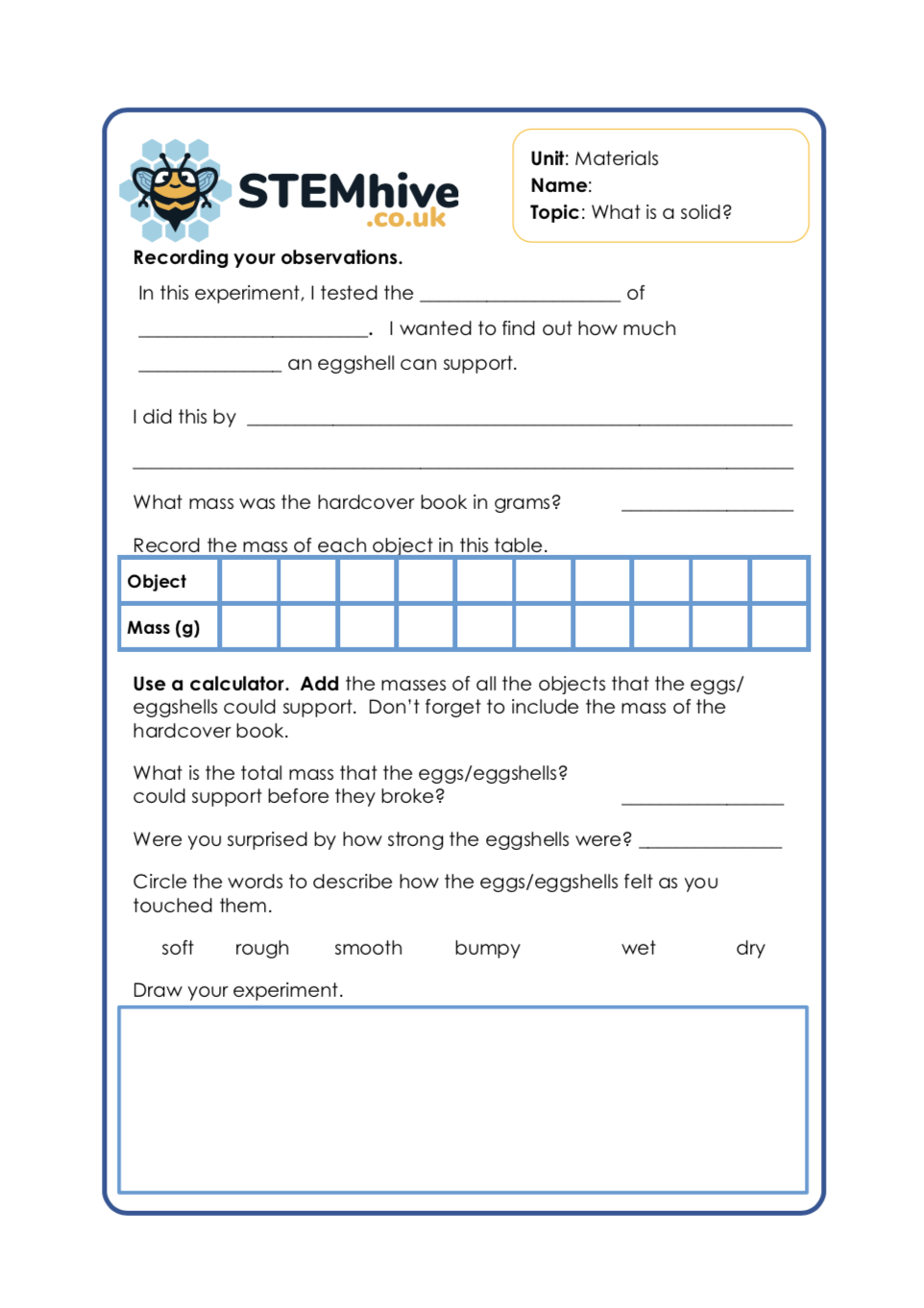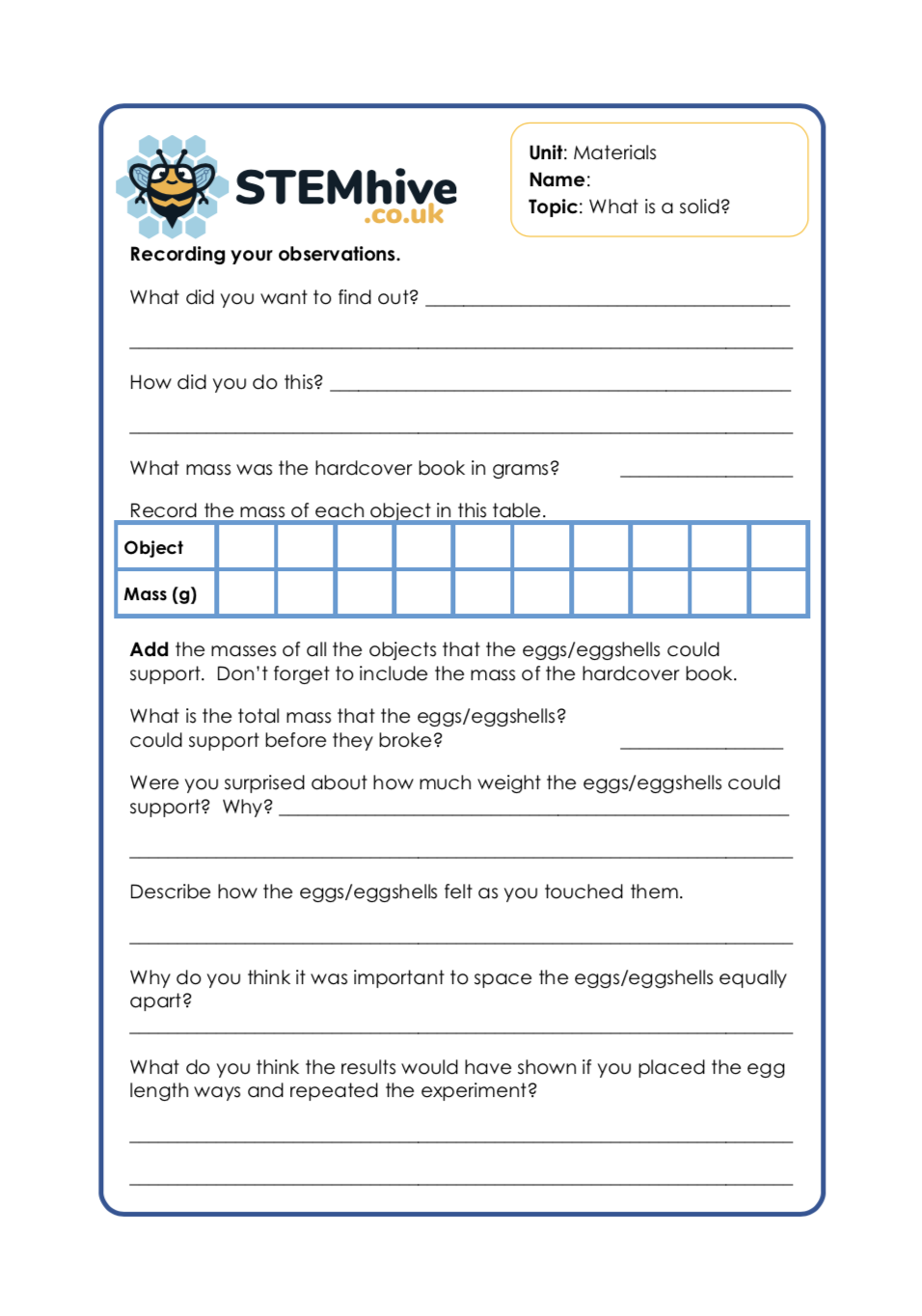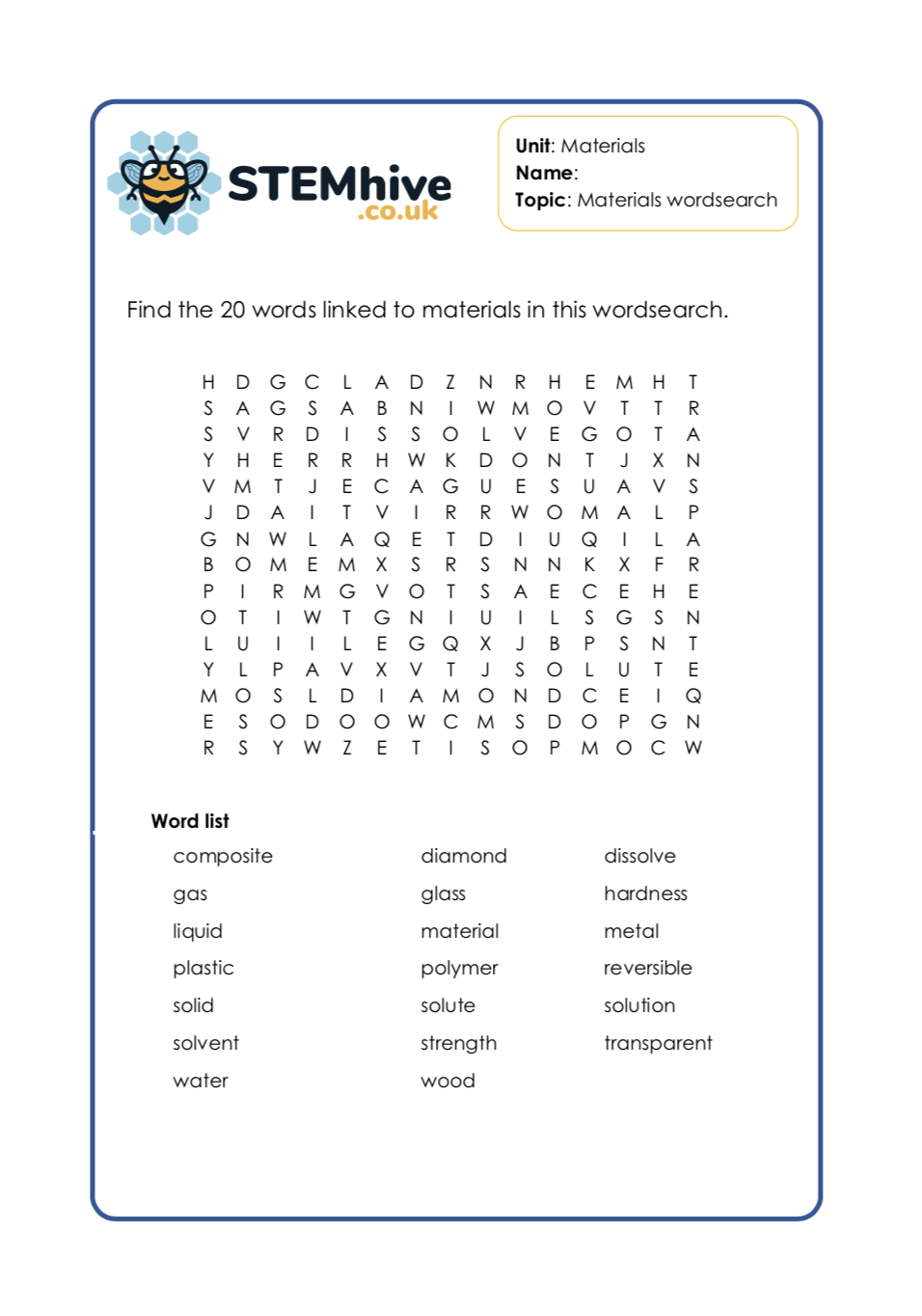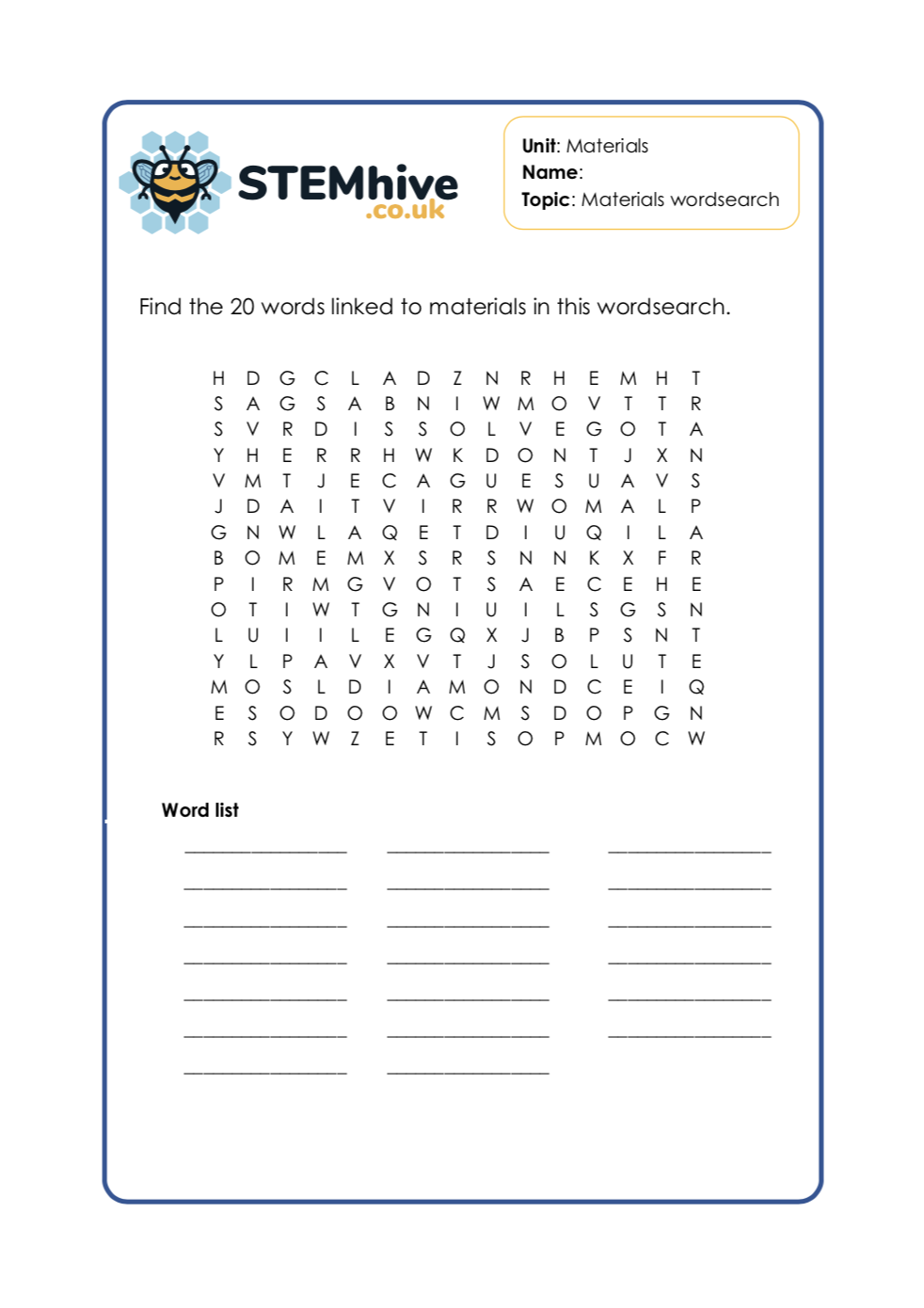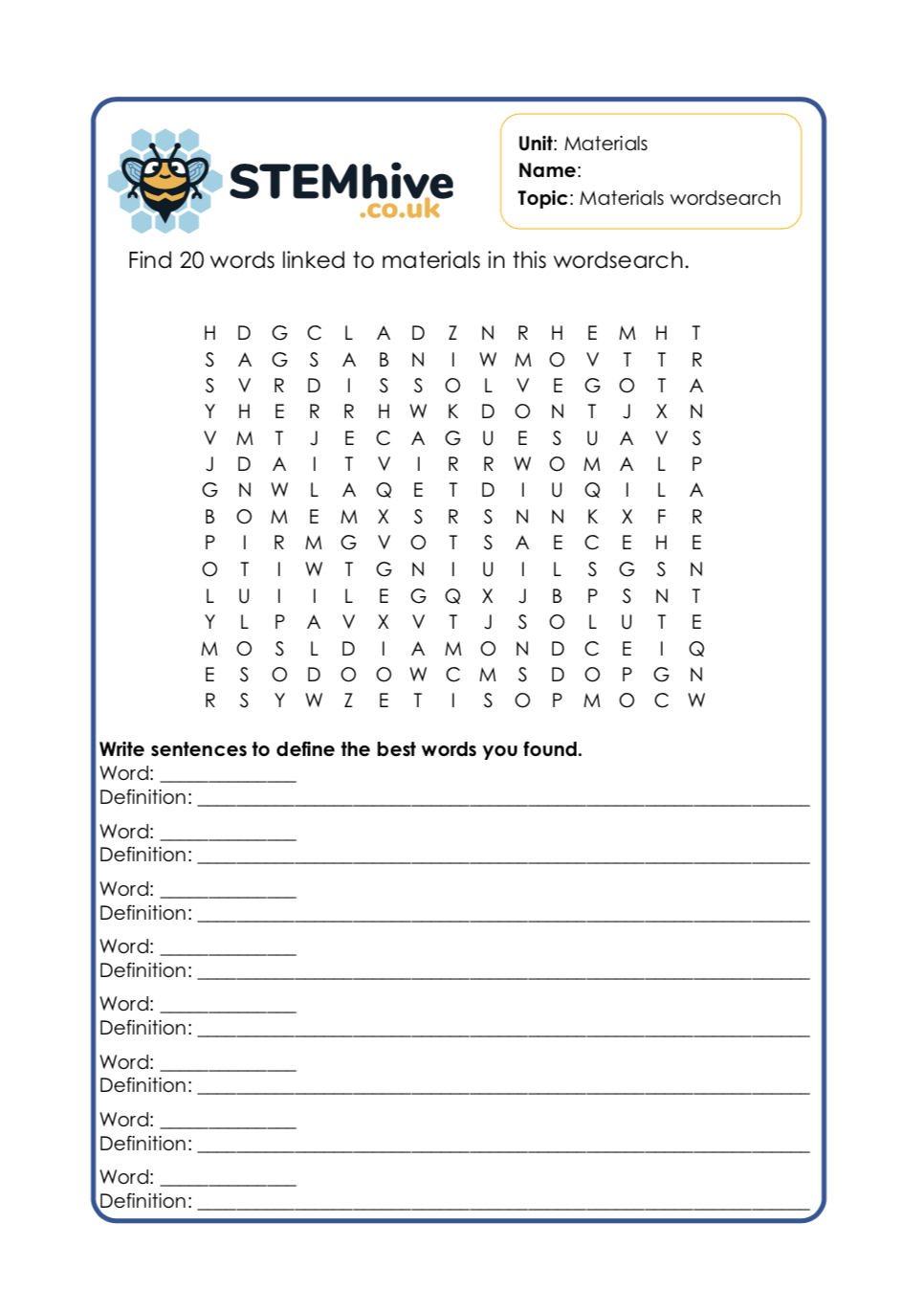Materials
Introduction to Materials: Rock, Paper, Scissors Short Film
This is a simple short film about the popular game we all played as kids: Rock, paper, scissors.
Ask your class to think about the materials they can see when watching the film.
Q: Which is the odd one out? Why? (in terms of materials)
Rock is a natural materials and the other two are man-made.
Q: What do we learn about materials from this video clip thinking about the properties?
Some materials are hard, soft, strong, weak, sharp, blunt etc.
We also learn materials have weaknesses. Q: Can you think of any materials that have weaknesses.
Water? Fire? Heat? Cold?Pressure?
Q: Is there anything that cannot burn?
Q: What materials decompose/do not decompose?
Q: What are the strongest materials? Weakest?
Q: What else do we know about materials?
There are plenty of discussion points but this will get you started…
Unlock ResourceMain Focus: What is a liquid? | Making a Waterwheel
This is an amazing resource to teach your KS2 class more about liquids. They will learn some amazing key facts and information to further develop their understanding. They will learn about the chemical formula of water, hydropower, viscosity, potential and mechanical energy and much more.
Your Year 5 / 6 class will then be guided step by step by our instructions to make their own working waterwheel and reflect on their creation.
A liquid is a form of matter that is between a solid and a gas. It can move around freely and adapt to the shape of its container. Unlike a gas, it is difficult to compress or squeeze water.
Examples of liquids include water, oil and blood. Water is made from two elements. These are hydrogen and oxygen. There are two hydrogen parts for every one oxygen part. The chemical formula is H2O.
Main Focus: Dissolving Experiment and Key Terminology
This is a brilliant resource that introduces your KS2 class to more scientific vocabulary, so much so, we decided to create a cloze activity at the end using the key words from the information learned at the beginning.
Your class will then complete an experiment on dissolving sugar in water and record their results using resources provided.
Unlock ResourceMain Focus: 3D Printing with Icing | Irreversible Changes Experiment
This is such an imaginative resource that explores the nature of irreversible changes using ‘3d Printing’ with icing.
Today you will also use the concept of fused deposition 3D printing to make some colourful and tasty 3D prints! You will make some royal icing and lay down layers of this icing, one at a time. Each layer will fuse together and harden as the shape dries. This is similar to the way hot plastic binds with other layers and solidifies as it cools in fused deposition modeling. The icing does not solidify as quickly, but in the end, you will be left with a solid 3D shape made of icing which you can eat. What could be better than that?
Some changes are irreversible. This means that they cannot be undone. This is because the chemical properties of the materials have been changed. This is usually because they have been combined in a way that breaks the chemical compounds down and recombines them to make completely different materials. This is called a chemical reaction.
Main Focus: Understanding Irreversible Changes
This is a science activity that your class will complete by answering questions to show their understanding on chemical changes and recognising the difference between reversible and irreversible.
When we cook an egg, we can observe the changes. The clear part of the egg (the albumen) will turn white and become firm. The yellow part (the yolk) will also become firm. This process cannot be reversed. Similarly, if we were to mix some ingredients and bake a cake, we cannot separate these ingredients at a later stage. The change is irreversible or permanent and has created a new material.
Unlock ResourceMain Focus: Reversible Changes
A reversible change is a change that can be undone or reversed. This means that no new materials are created and the original material can be recovered. A reversible change may change how a material looks, feels or behaves but it does not create a new material.
In this resource, your class will make observations about reversible changes and reactions.
Main Focus: Plastic from Milk Experiment
In this science experiment, your Year 5 / Year 6 class will make and mould plastic using milk and vinegar.
Wait…What!?
Did you know that plastic can be made out of milk? It’s true! From the early 1900s until about 1945, milk was commonly used to make many different plastic ornaments. These included buttons, decorative buckles, beads and jewelry, fountain pens, the backs of hand-held mirrors, fancy combs and brush sets. Milk plastic (casein plastic) was even used to make jewelry for Queen Mary of England who lived in the 1500s! In this activity, you will make your own casein plastic out of hot milk and vinegar.
Main Focus: Kinetic Sand Investigation
In this experiment, your class will make kinetic sand and investigate the properties of the new material!
You will need:
- 5 cups fine grade dry sand, or coloured sand
- 3 cups of cornstarch
- 1 cup of silicone oil, baby oil or regular cooking oil
- 2 bowls
Note: you can use a small cup as long as you do not change the ratio.
Sometimes we can mix materials to create compounds. A compound is a material that is made up of more than one different material. Silicone is a term used to refer to a group of materials that contain the elements silicon and oxygen. Silicones are polymers, or molecules made up of long chains of repeated units.
When silicone oil is mixed with sand, we call it kinetic sand or magic sand.
Main Focus: Non-Newtonian Fluids | Creating Quick Sand
Sir Isaac Newton is famous for developing many scientific theories in maths and physics. In his research, he described how ‘normal’ liquids or fluids behave. He said that they have a constant viscosity or flow. This means that their flow behaviour or viscosity only changes with changes in temperature or pressure.
Liquids typically take on the shape of the container that they are poured into. Some fluids do not follow this rule and we call them non- Newtonian fluids.
In this STEM Activity, your class are going to make a non-Newtonian fluid called oobleck that will change in viscosity when stress is applied through movement. After we make the oobleck we will test it and record its properties and movements.
Main Focus: Solids Experiment
In this experiment, your class will test the strength of eggshells and find out just how much mass an eggshell can support.
Solids are one of the three common states of matter. They are recognised as having tightly packed molecules which are held together by strong bonds. These molecules are so close together that they cannot move. This is why solids do not change shape easily.
Did you know?
- Not all solids are hard! A powder is a dry, bulk solid composed of many very fine particles that can move freely when shaken or tilted.
- The material osmium is the densest natural material found in nature.
- Diamond is the hardest known material.
- Some solids like copper can be pulled and stretched into fine
strands called wire.
- Some solids can change into liquids and gases.
- Solids are used to make large structures because they are strong
and long-lasting.
Main Focus: Vocabulary Word Search
This is a 20 word word search linked to some of the vocabulary used throughout this pack.
We have differentiated this resource three ways:
- Simply find the words using a list.
- Find words without the list and remember key terms.
- Find words without the list, remember key terms and write definitions of the ‘best’ words.

